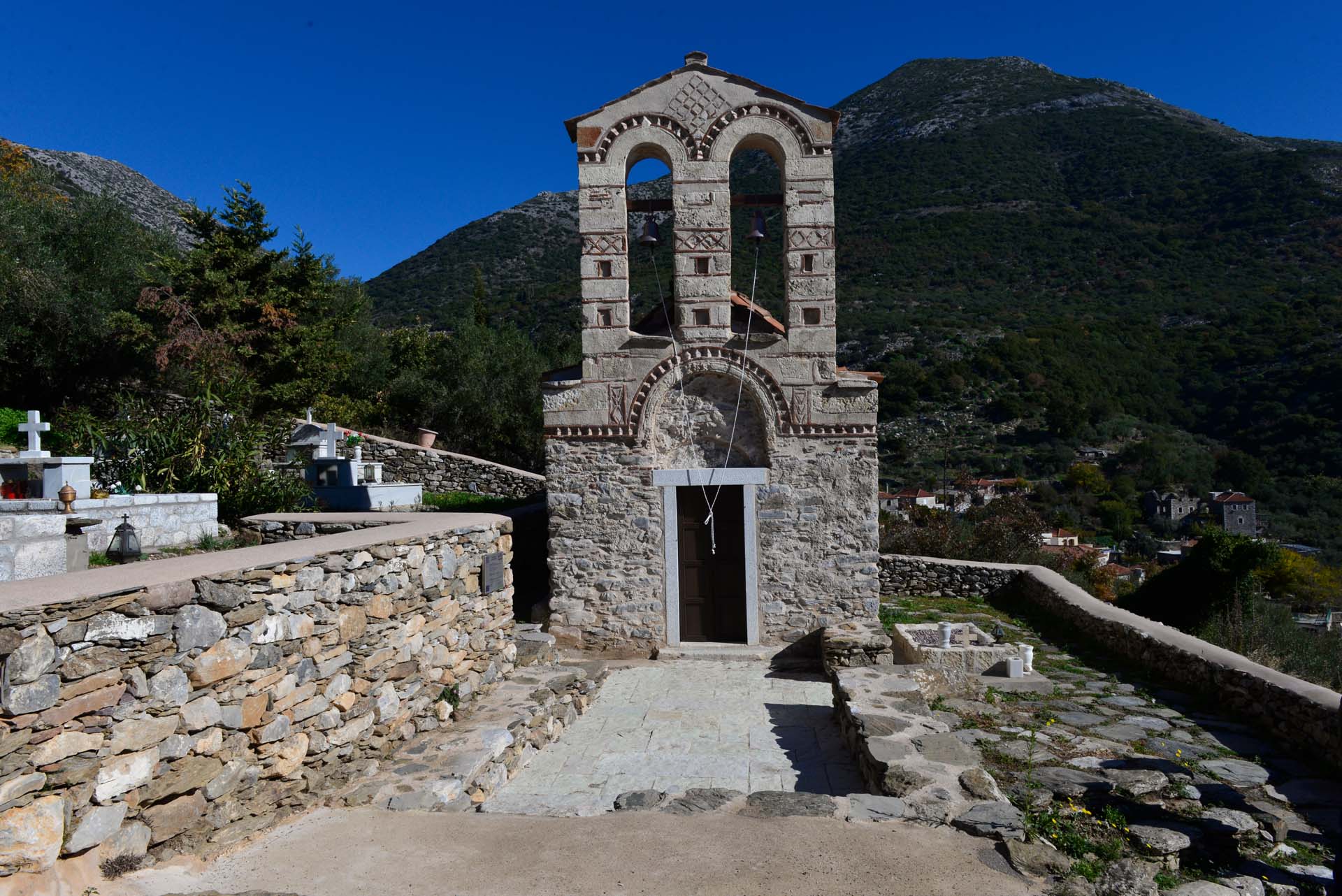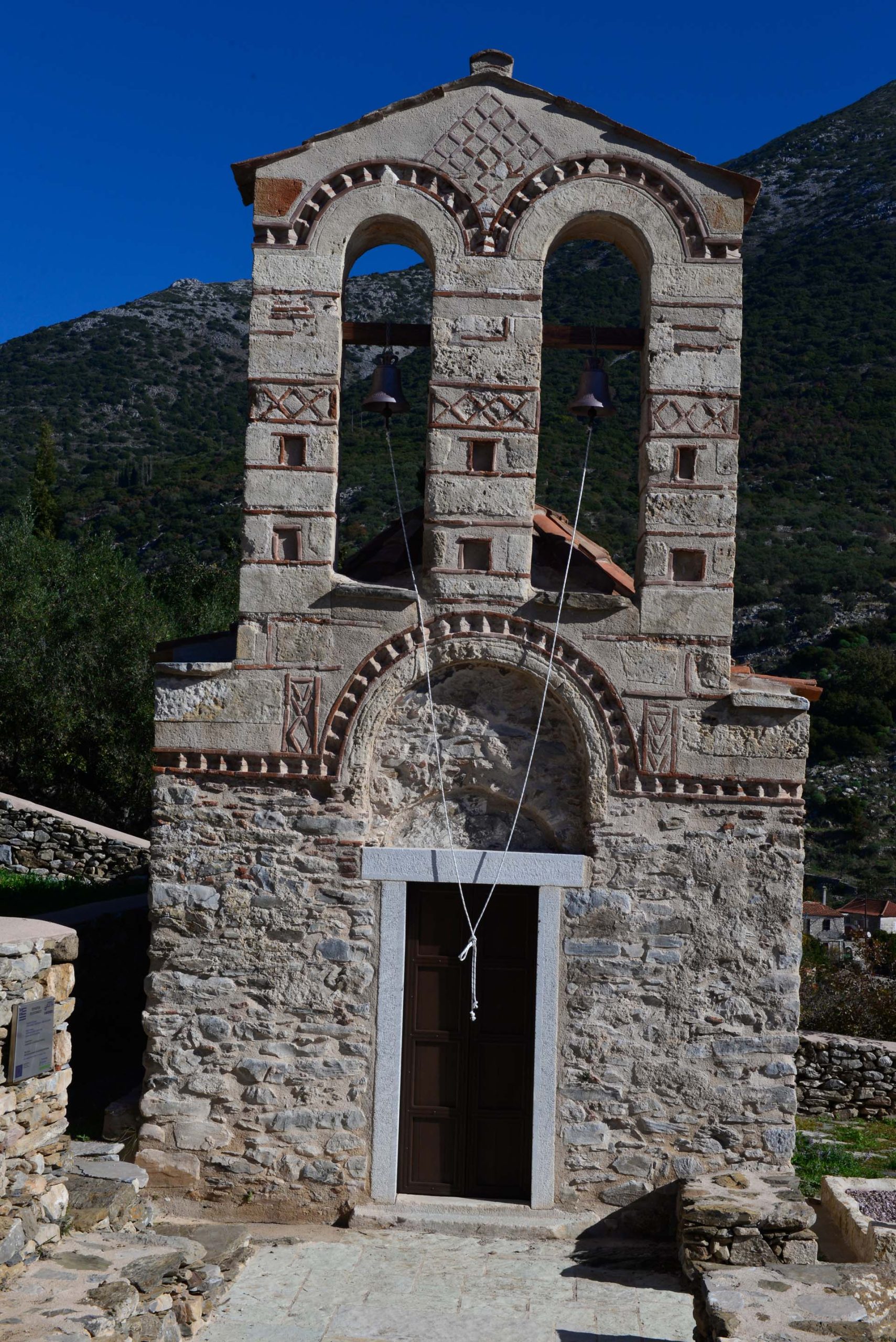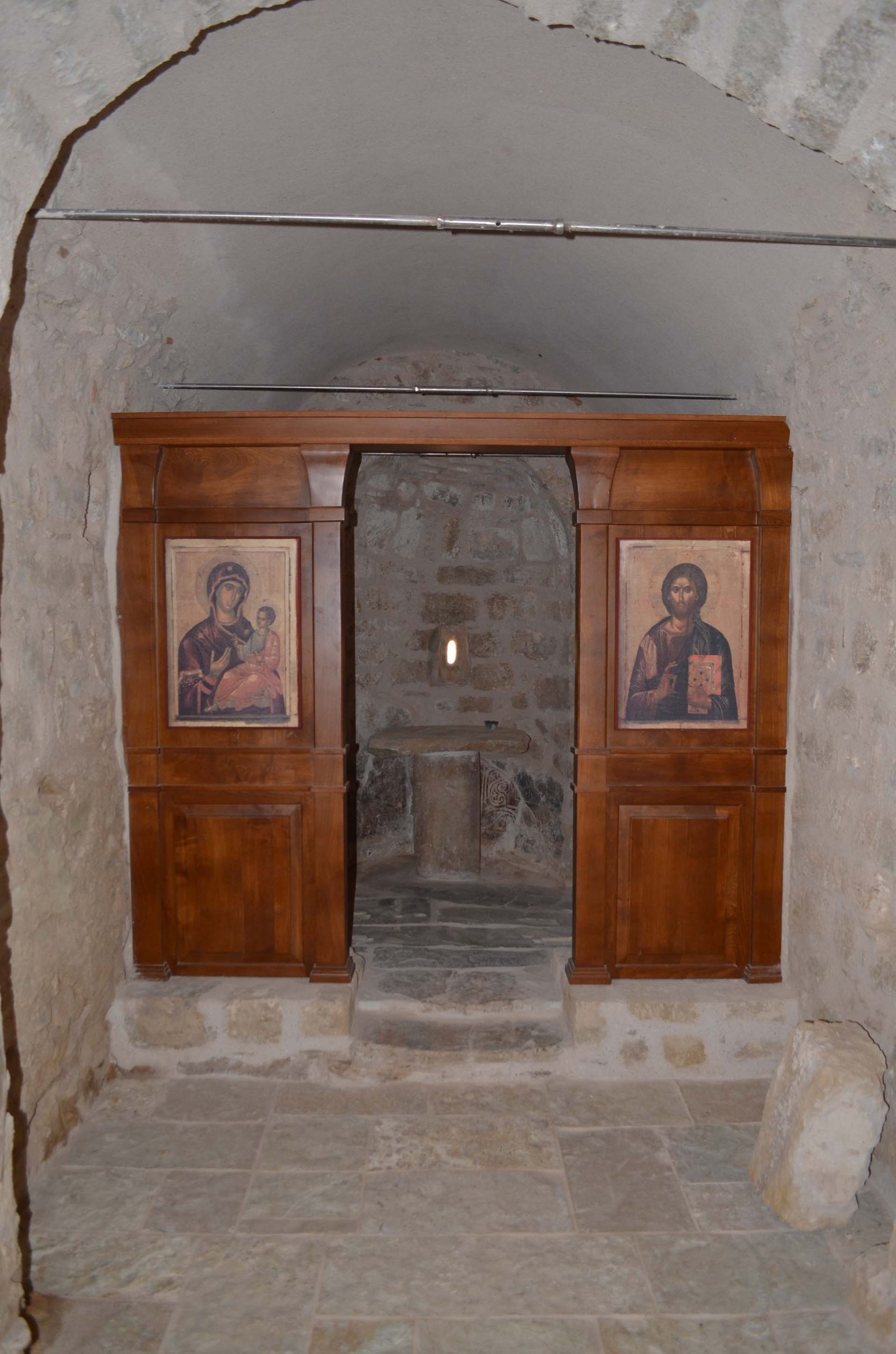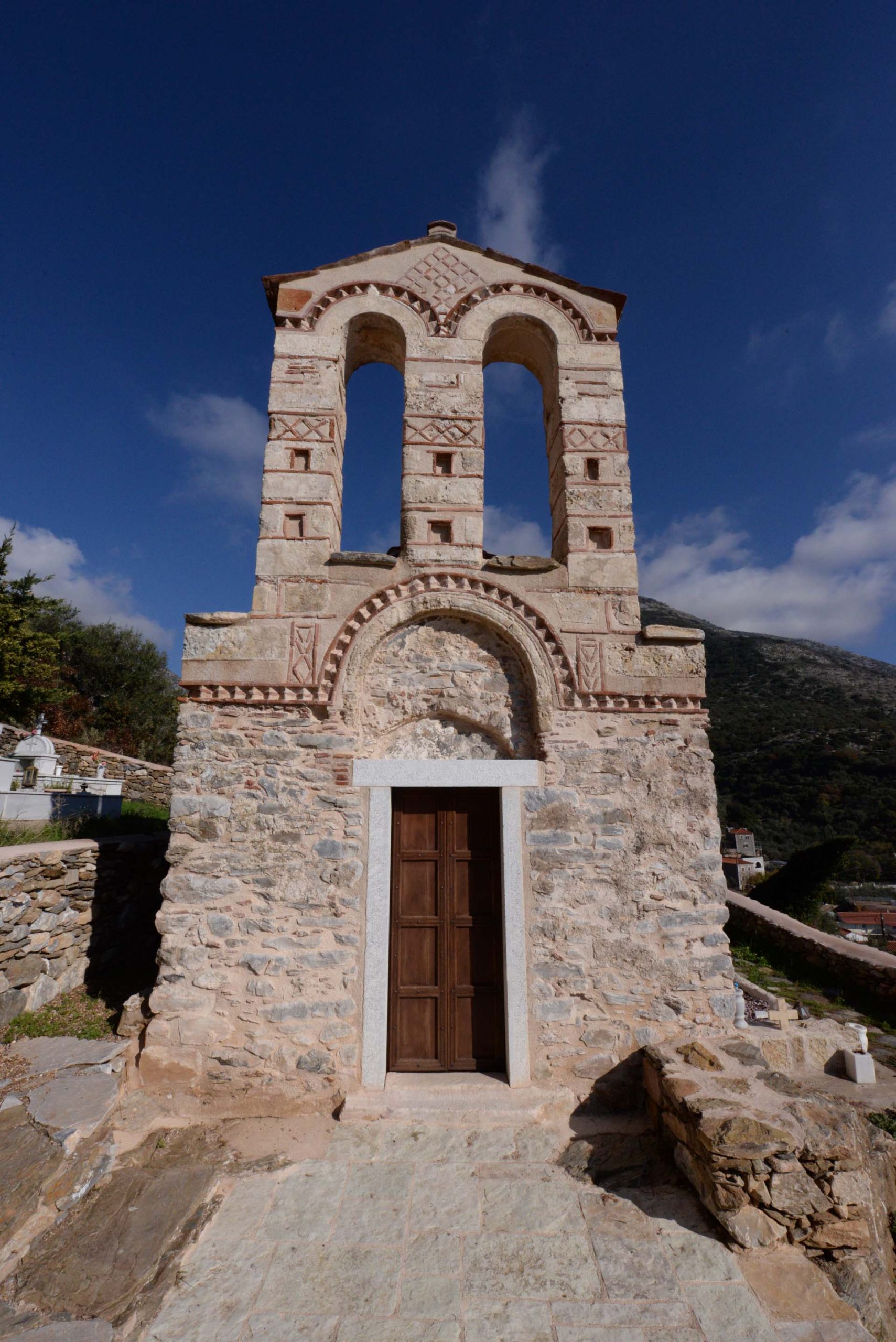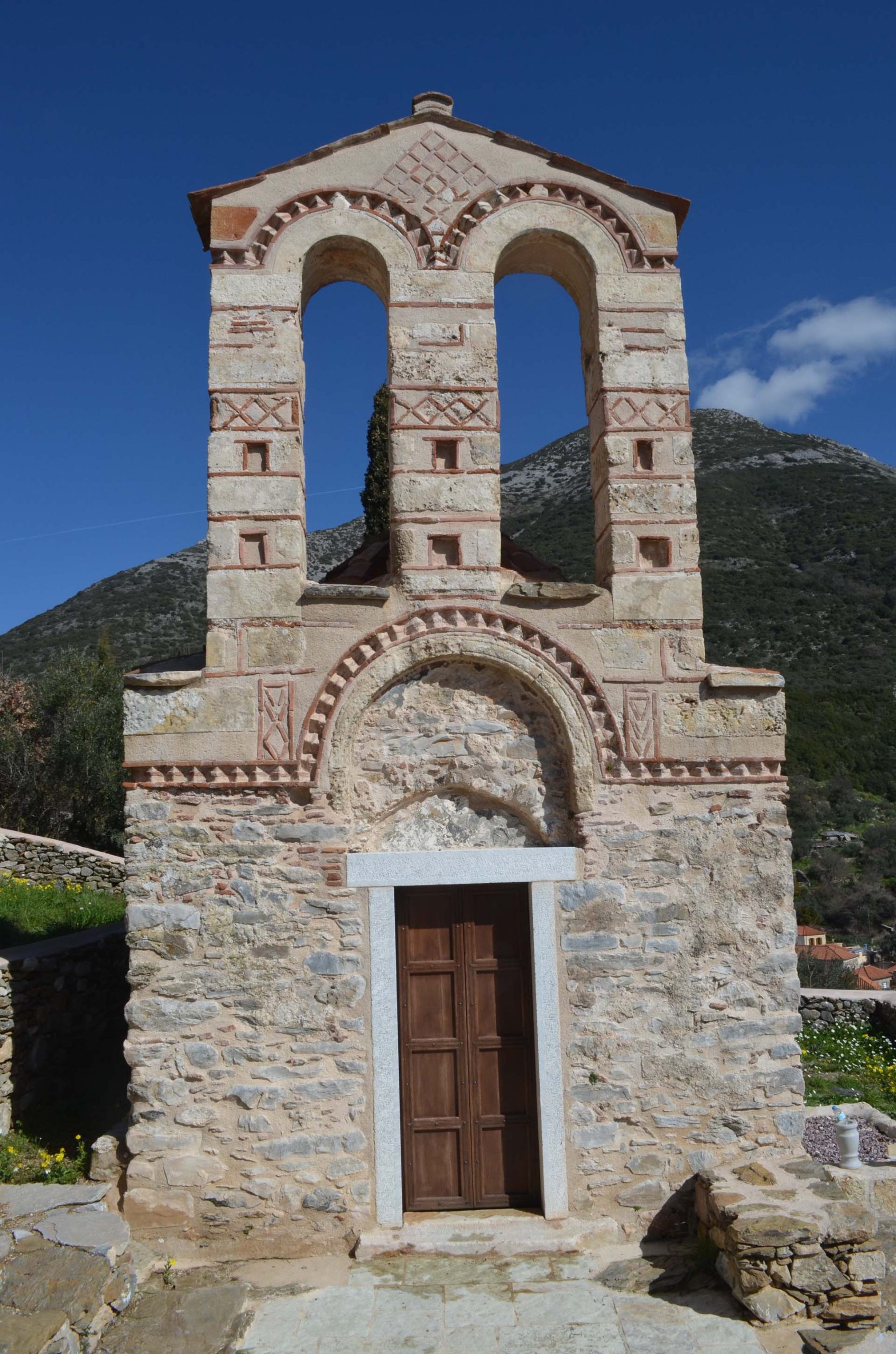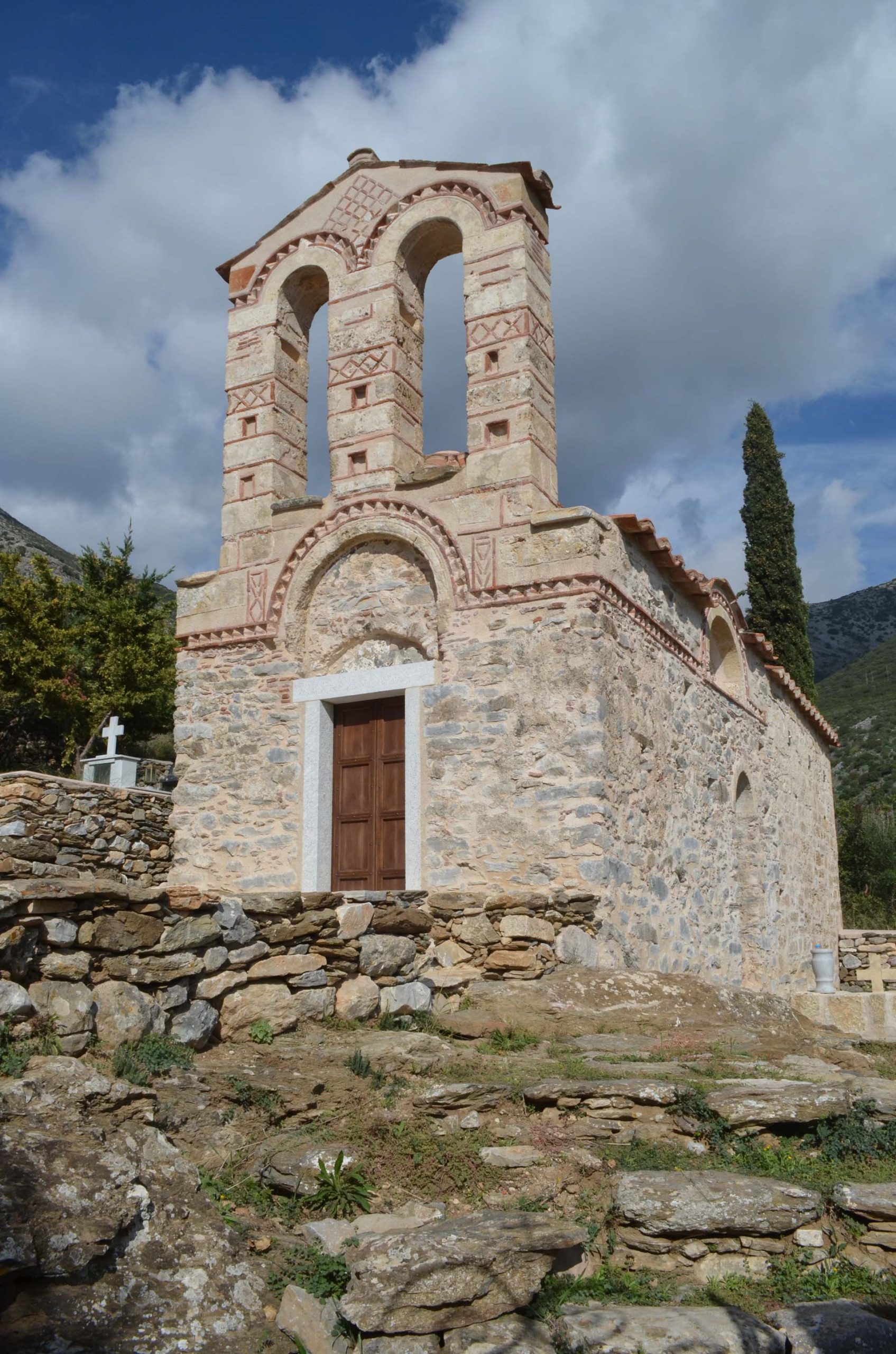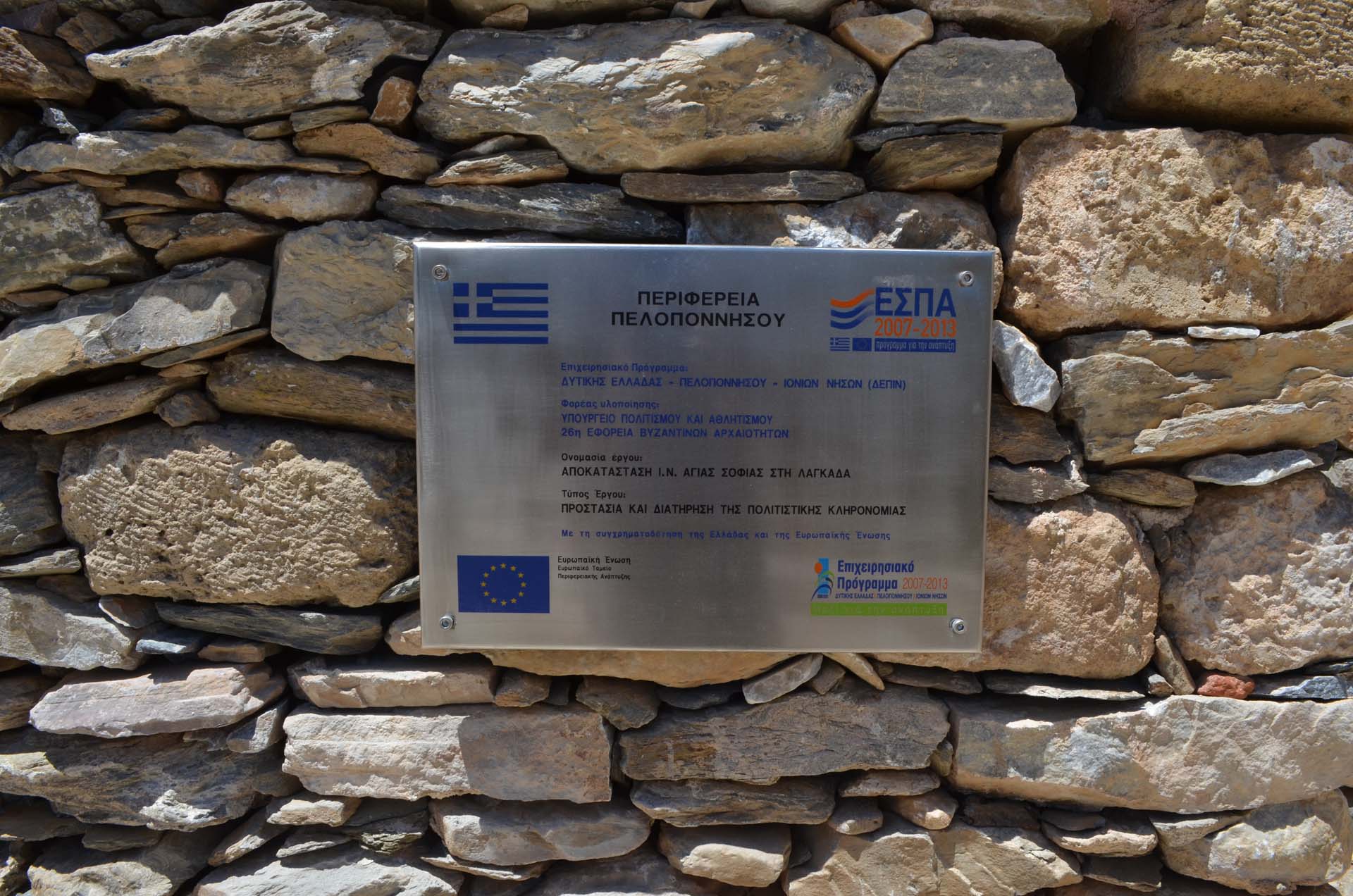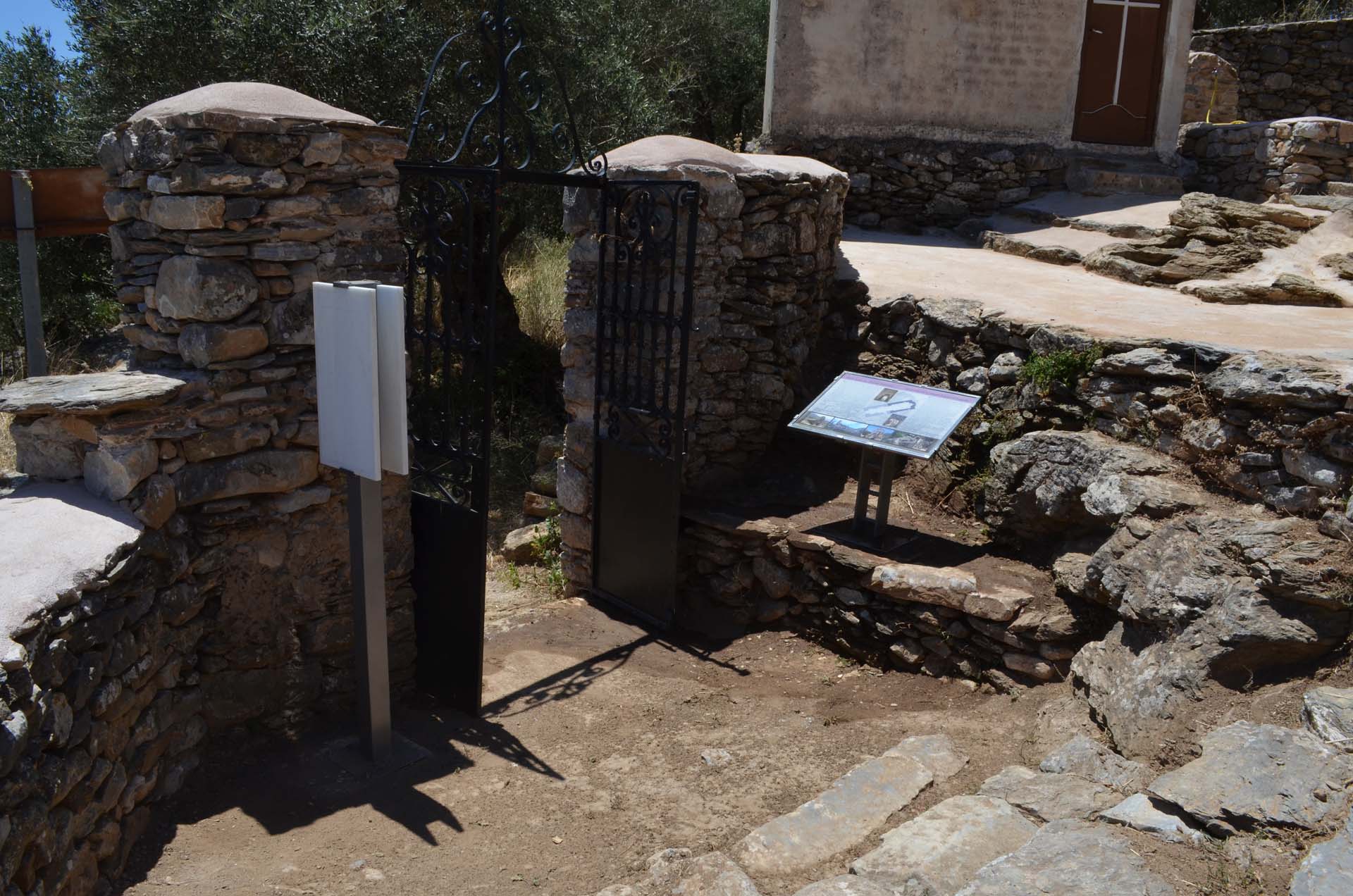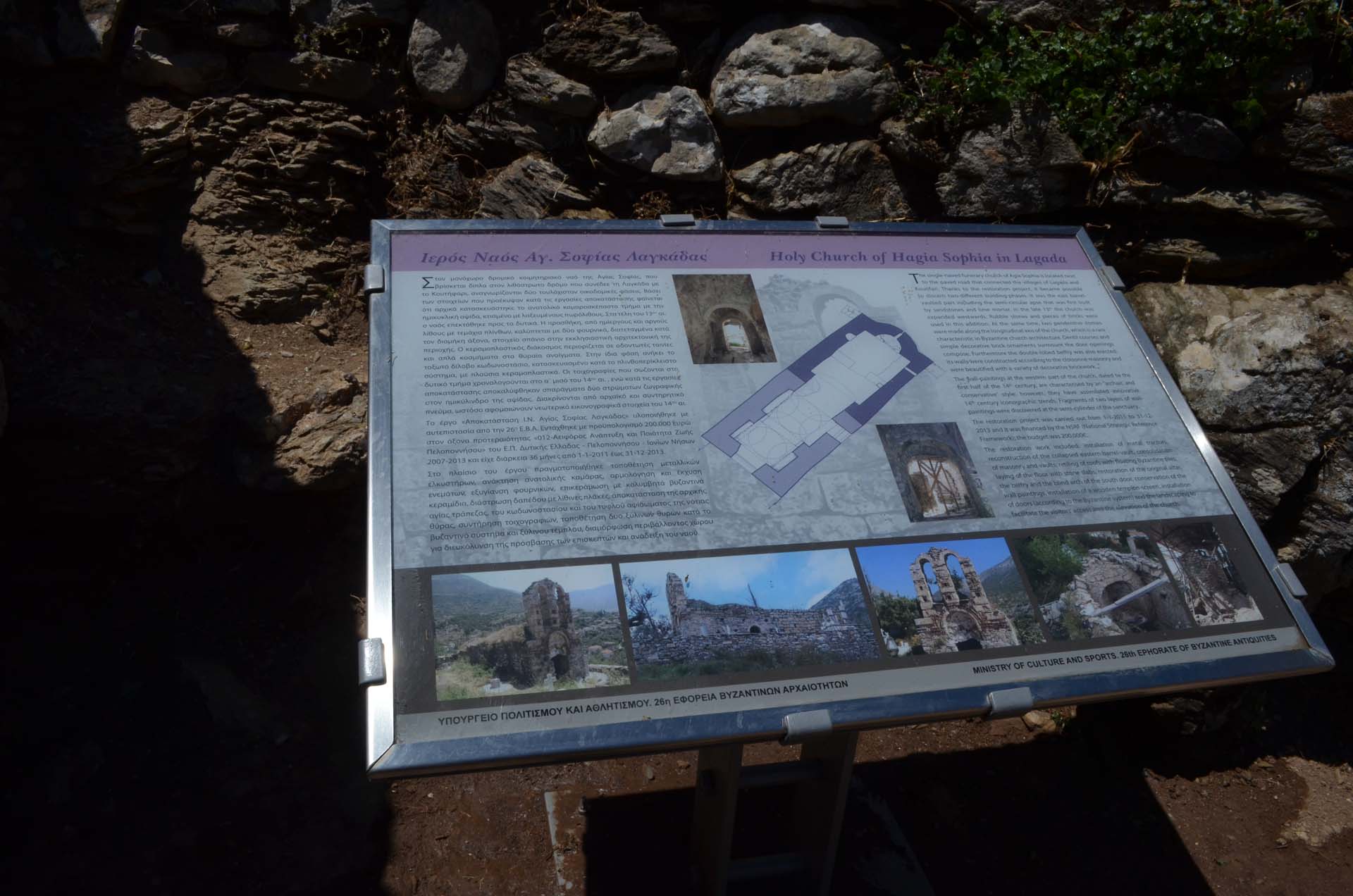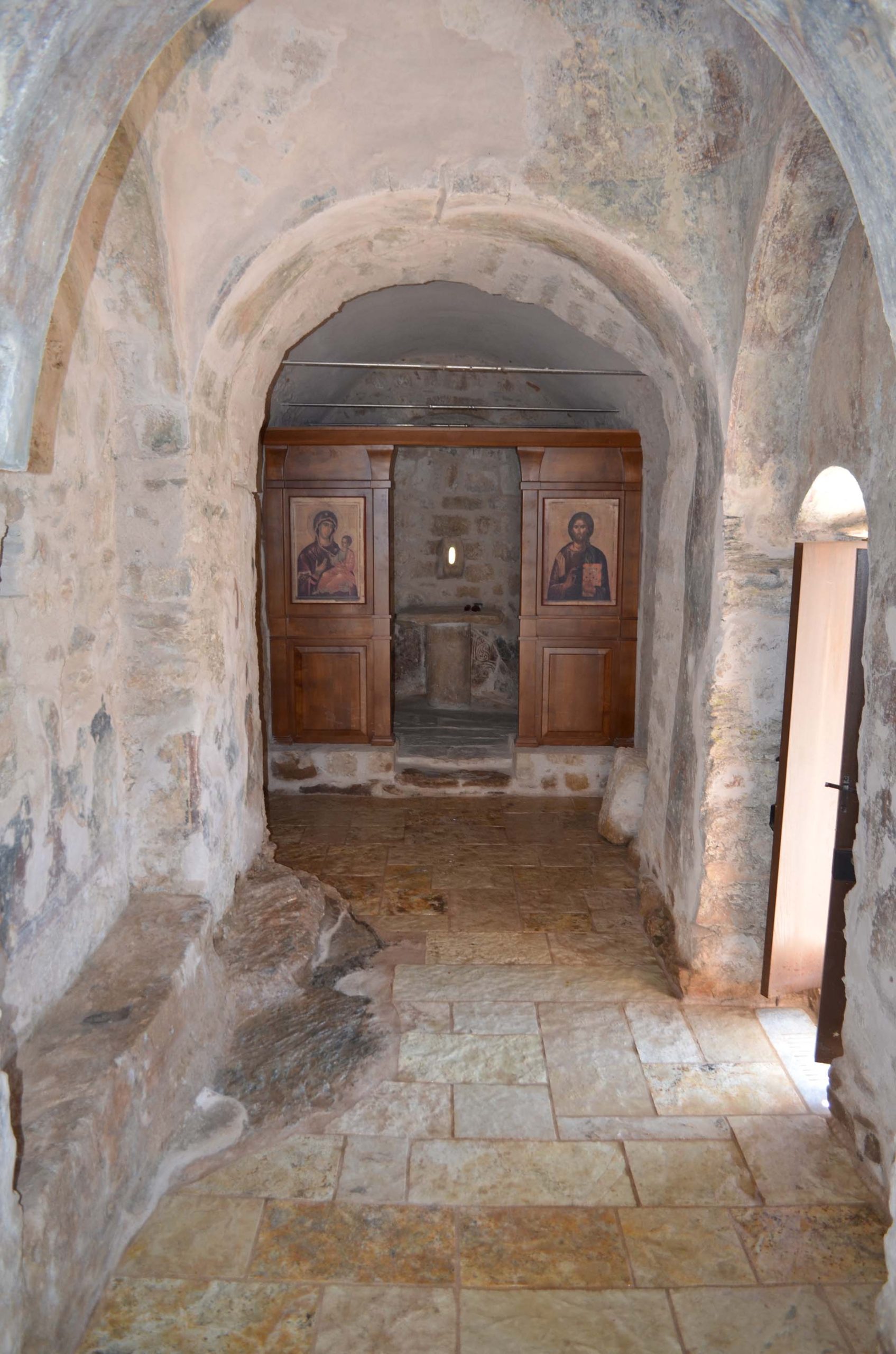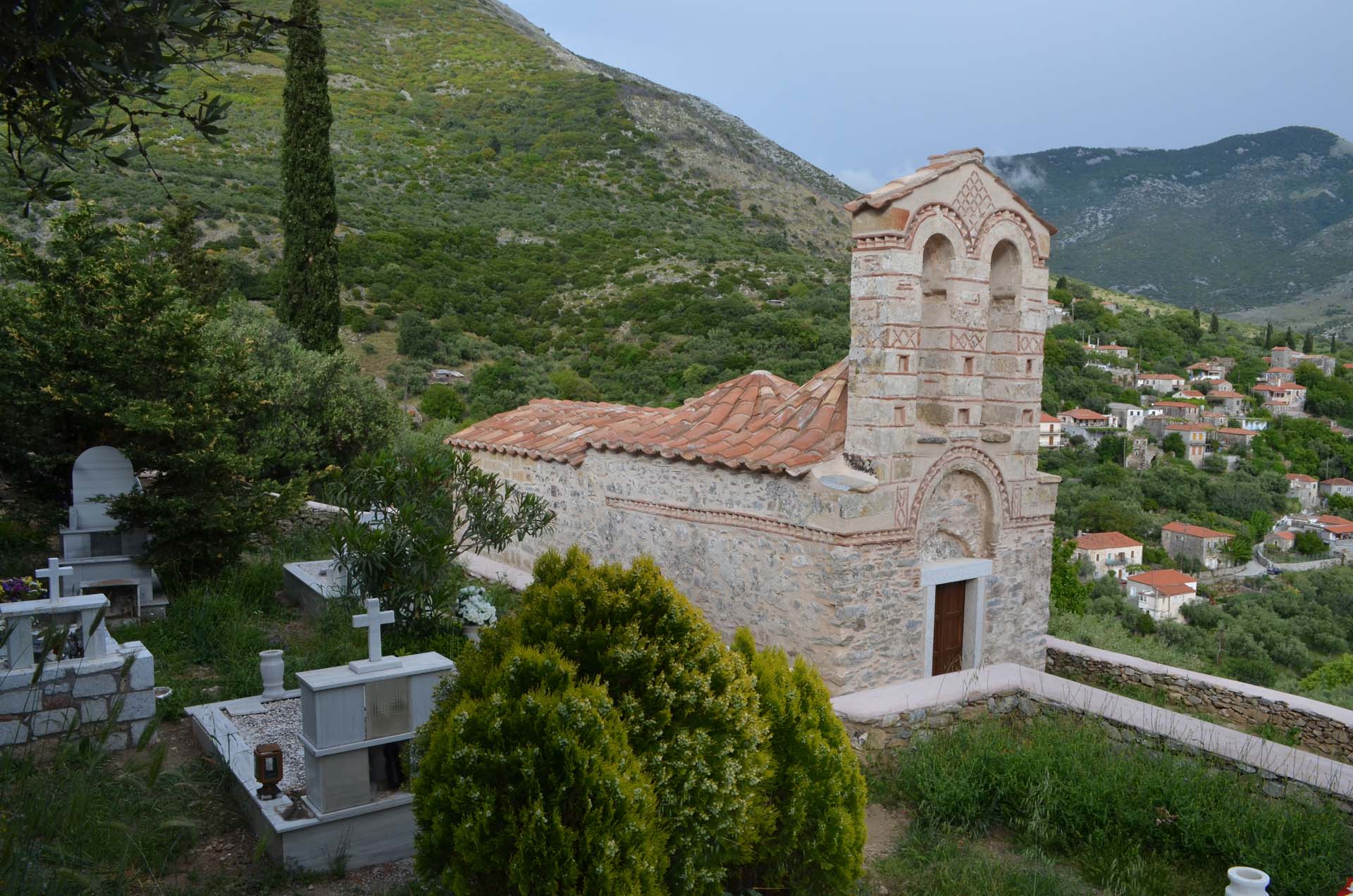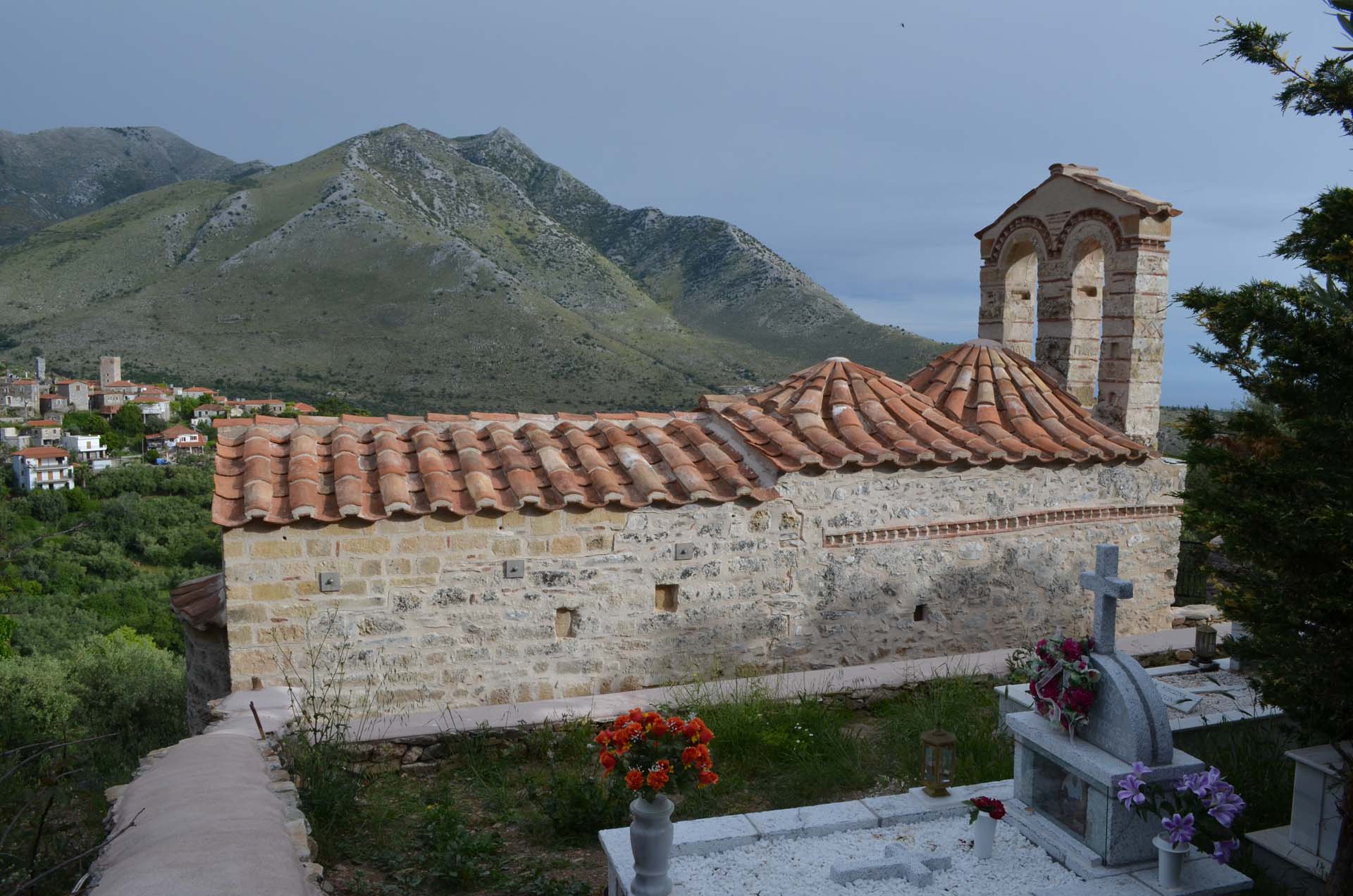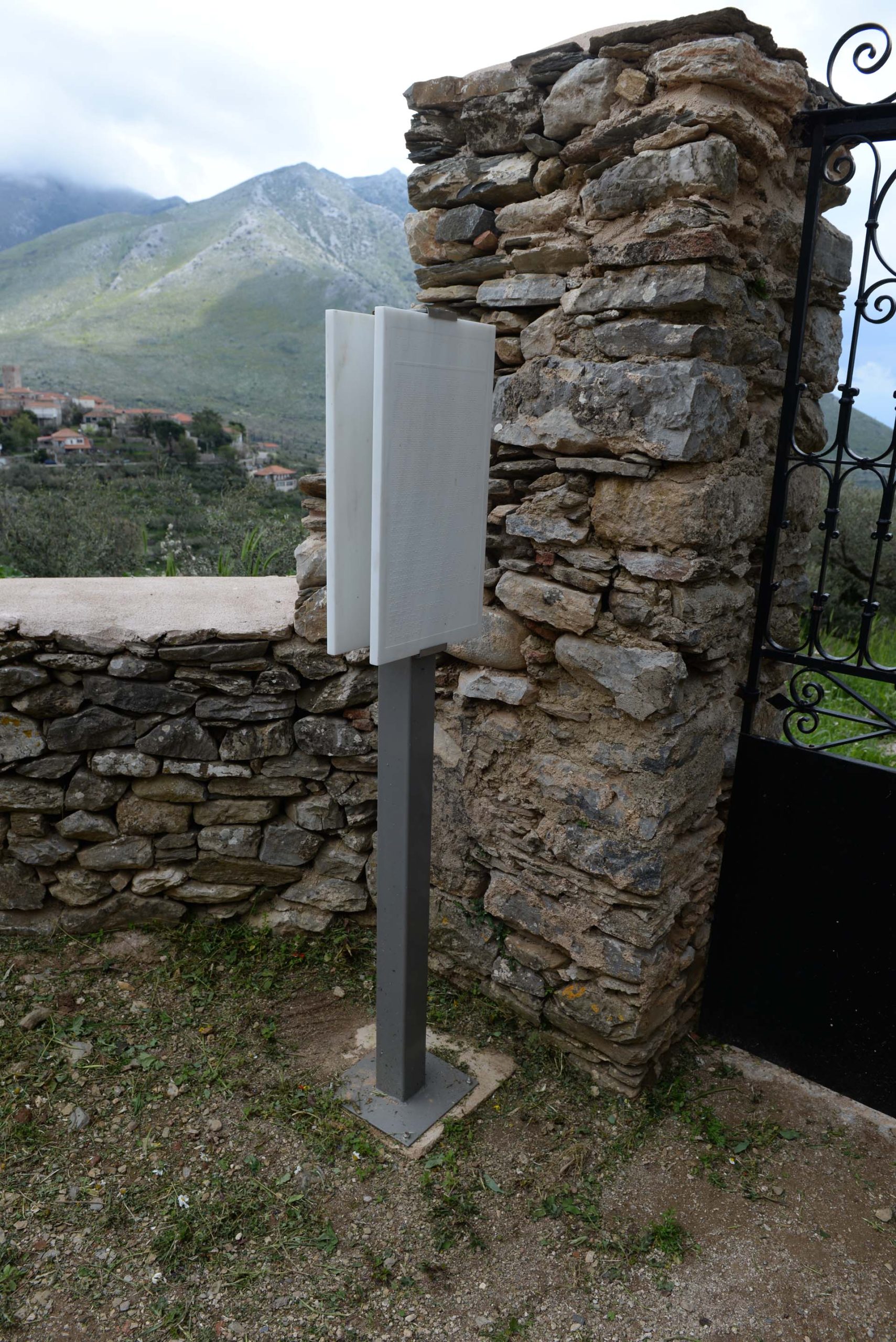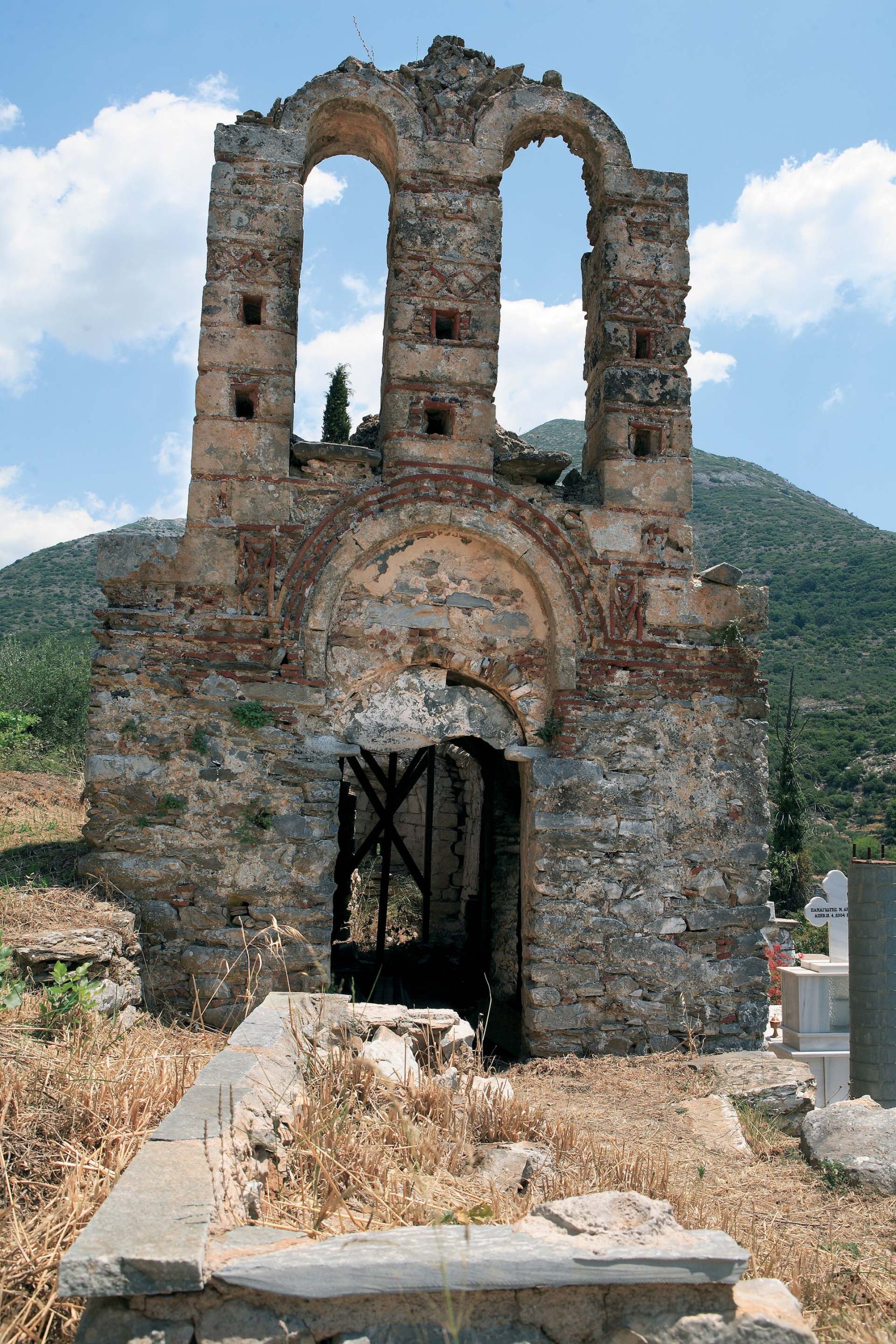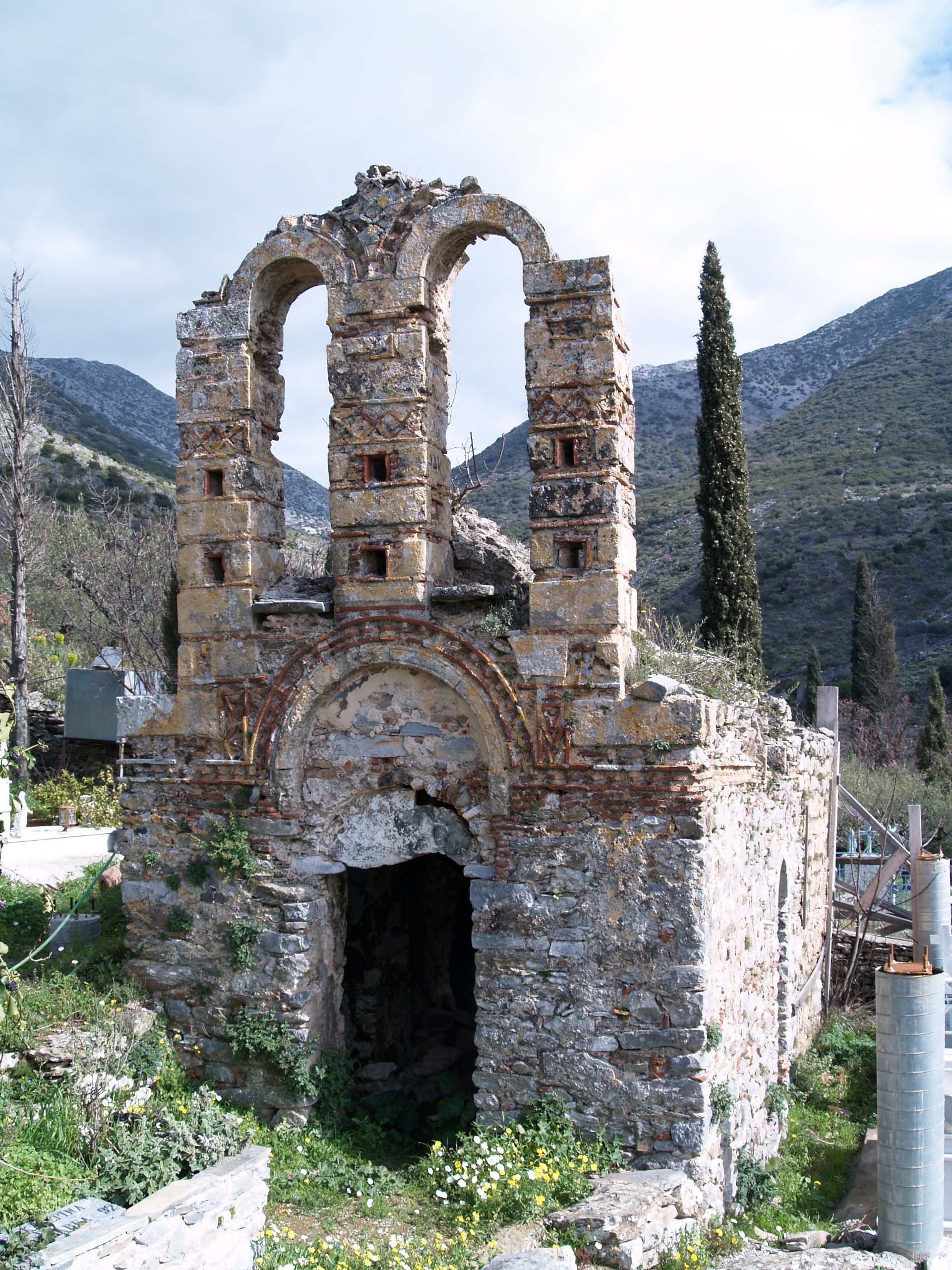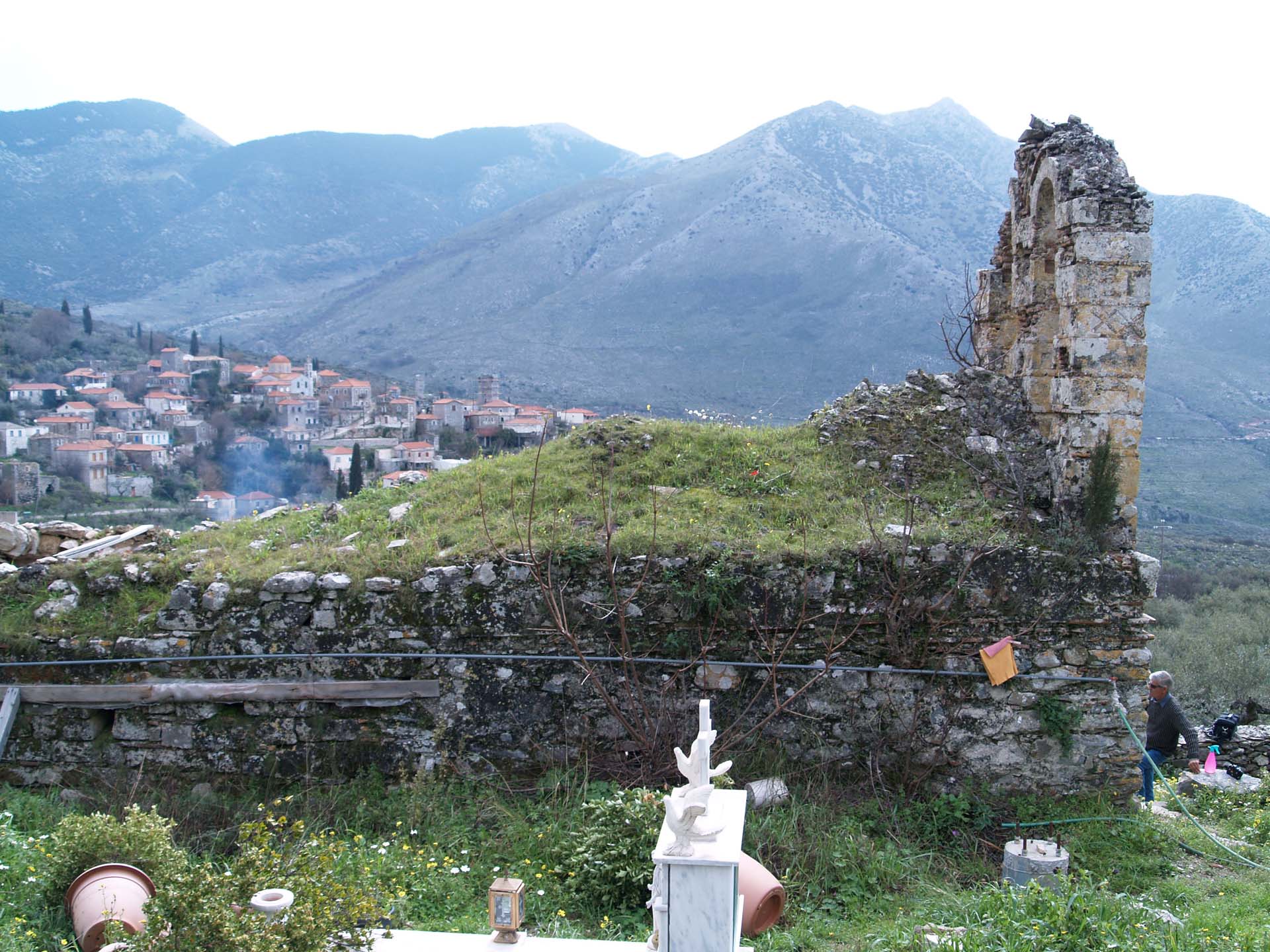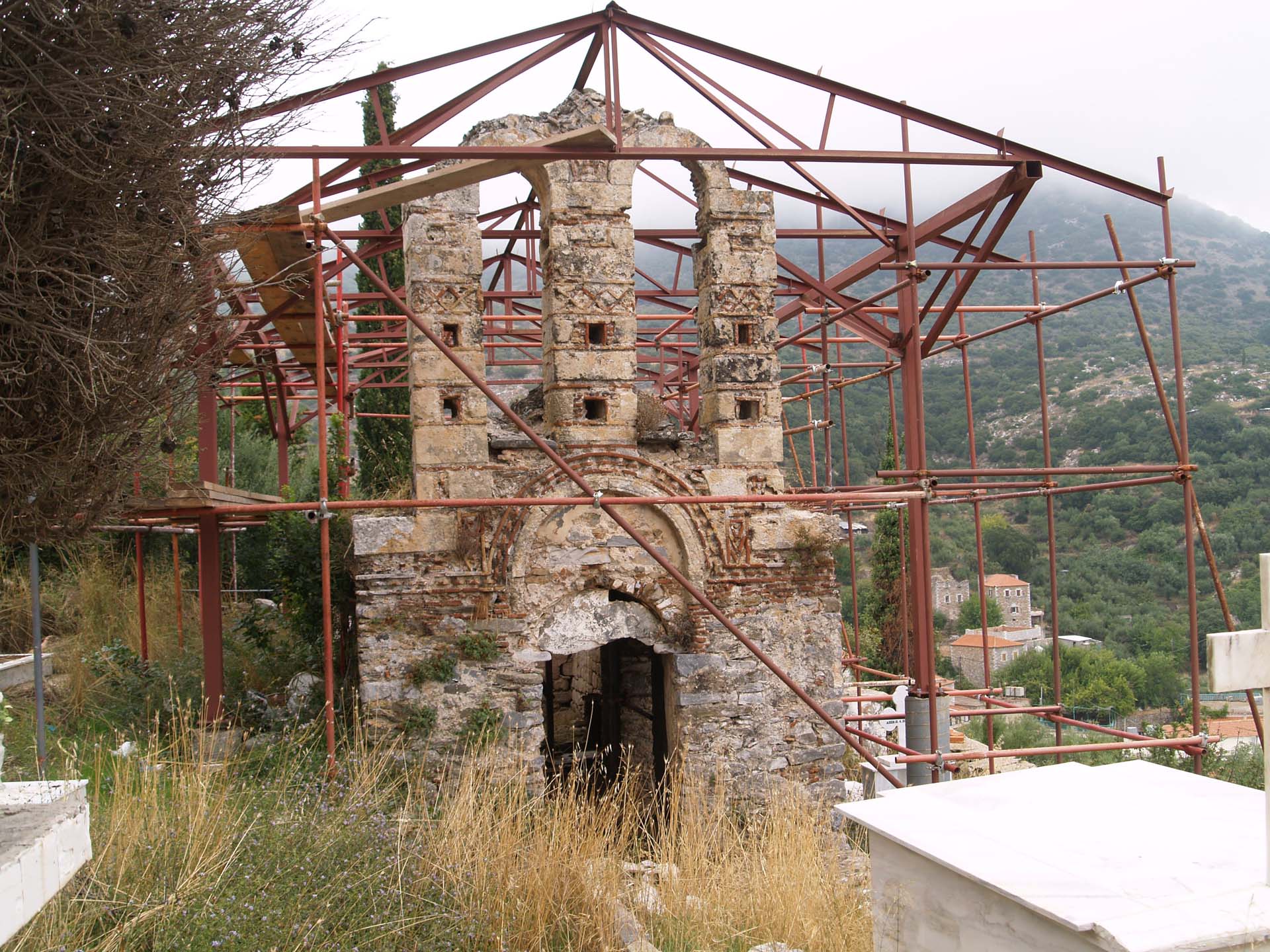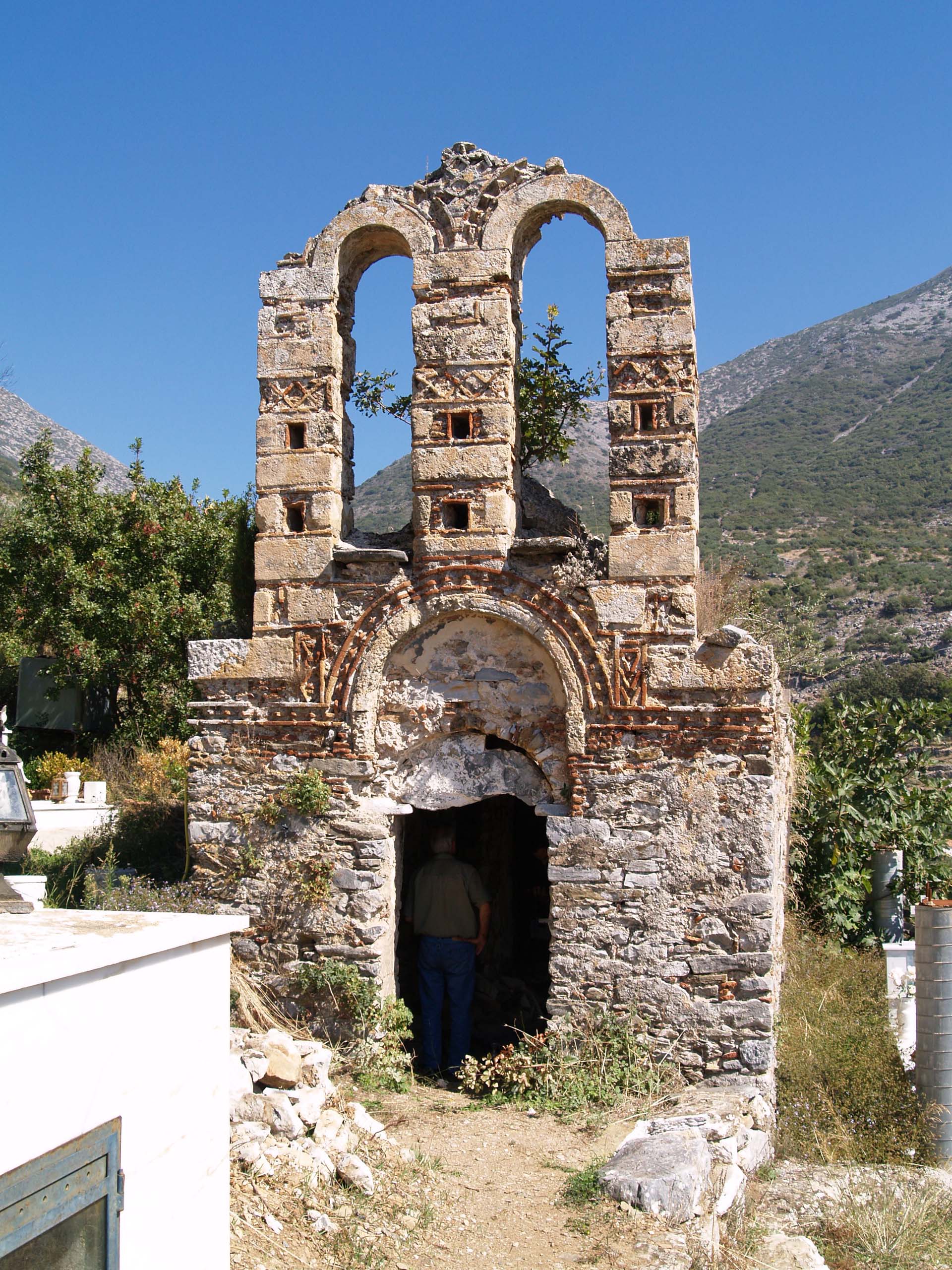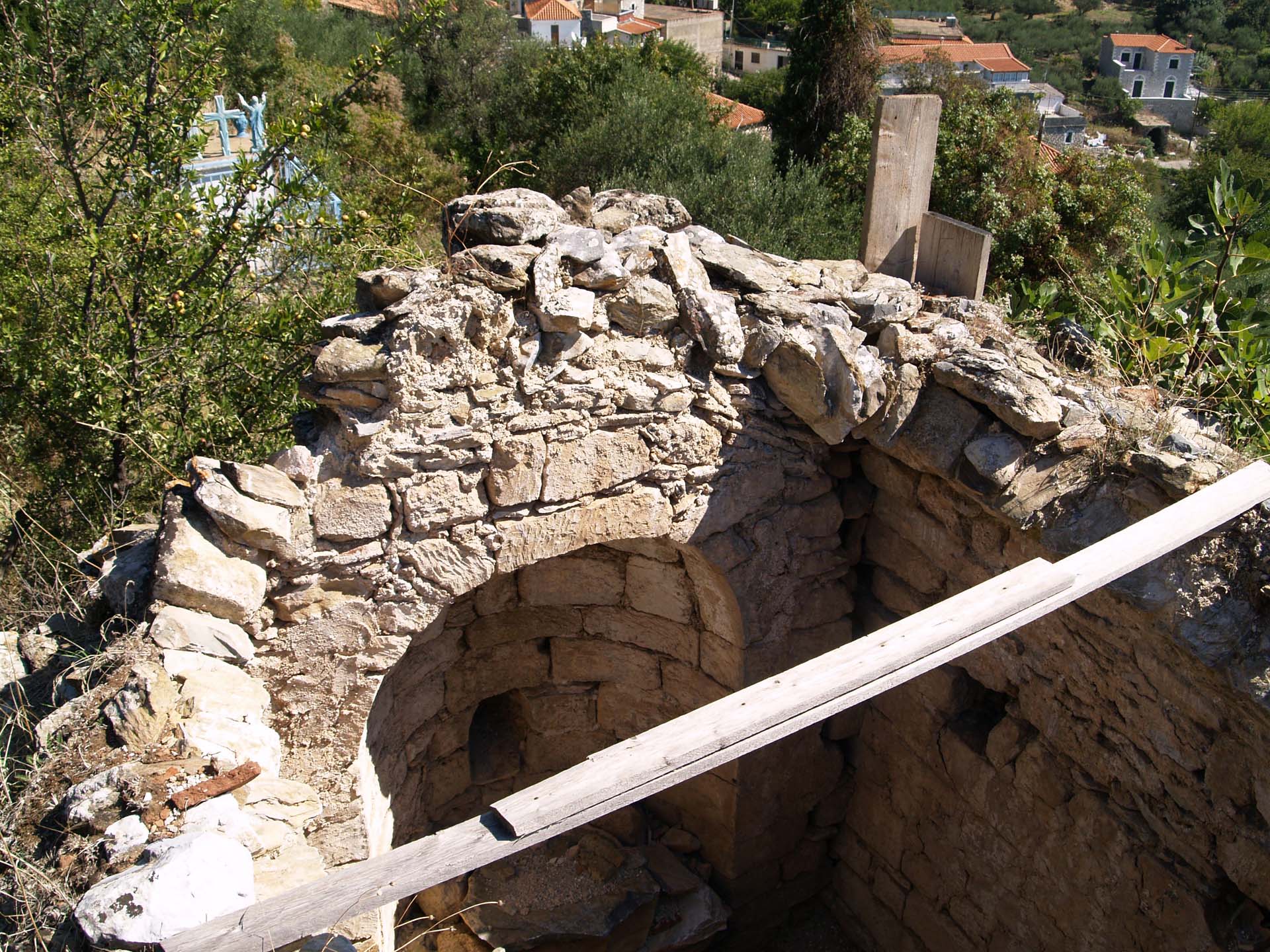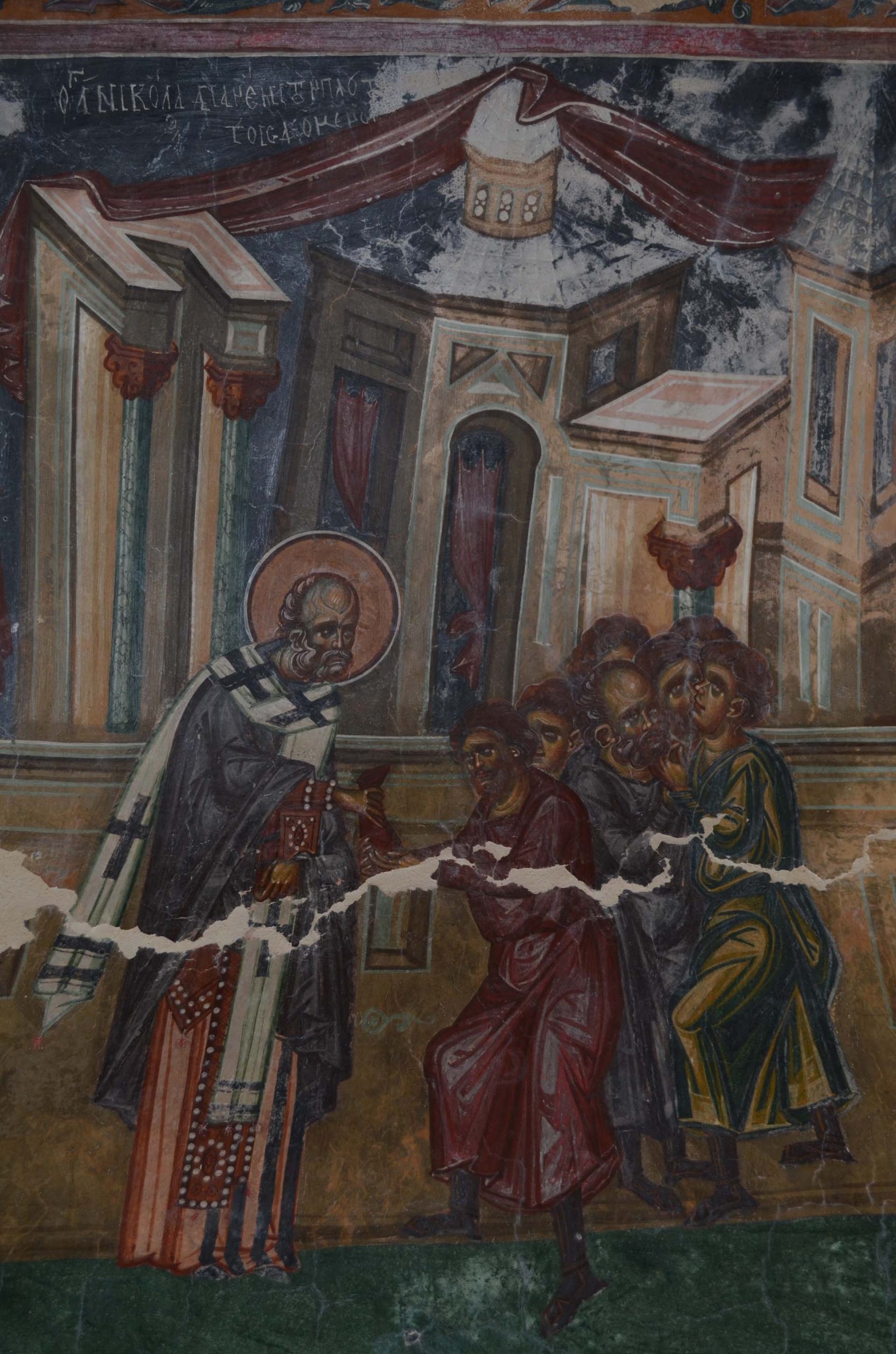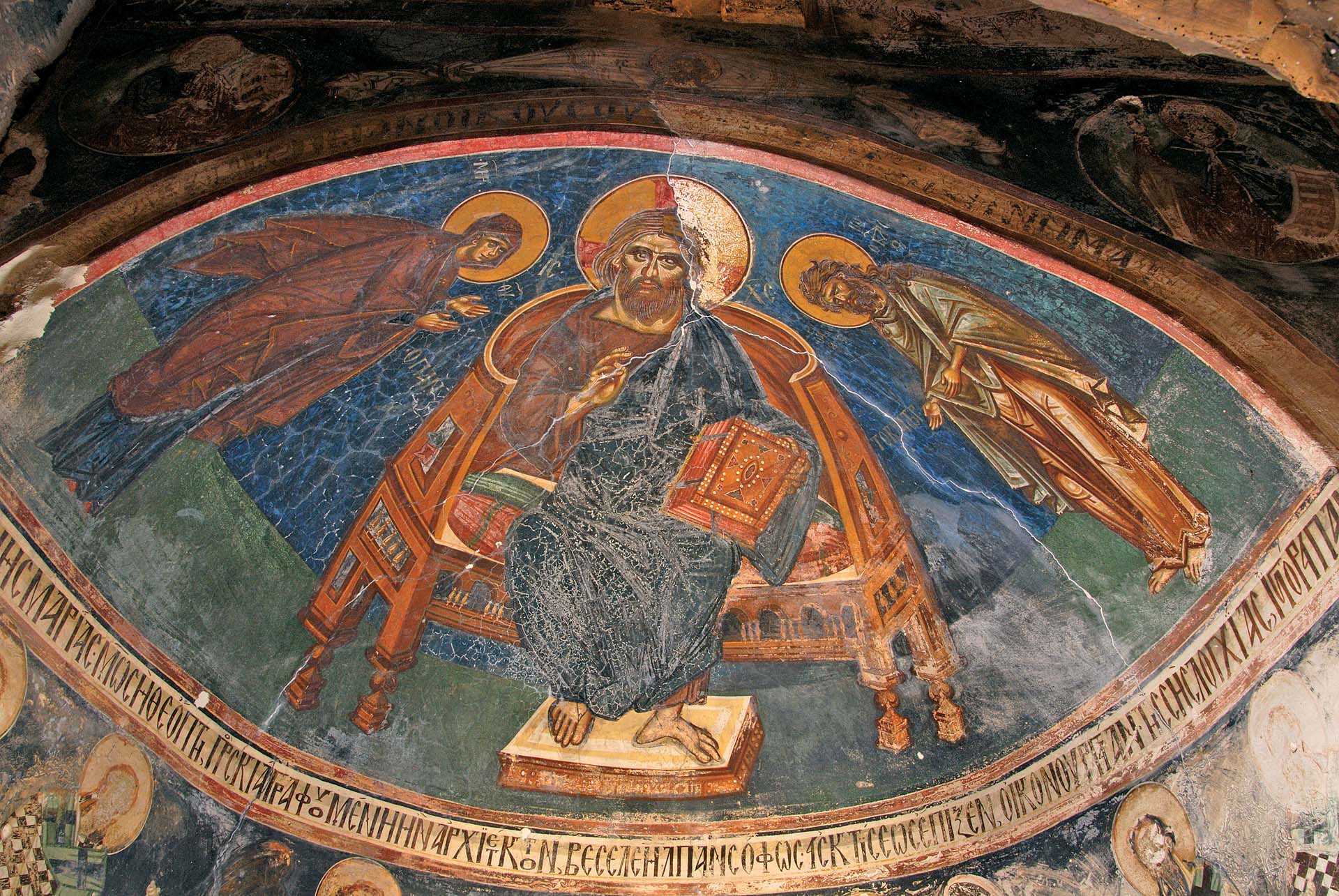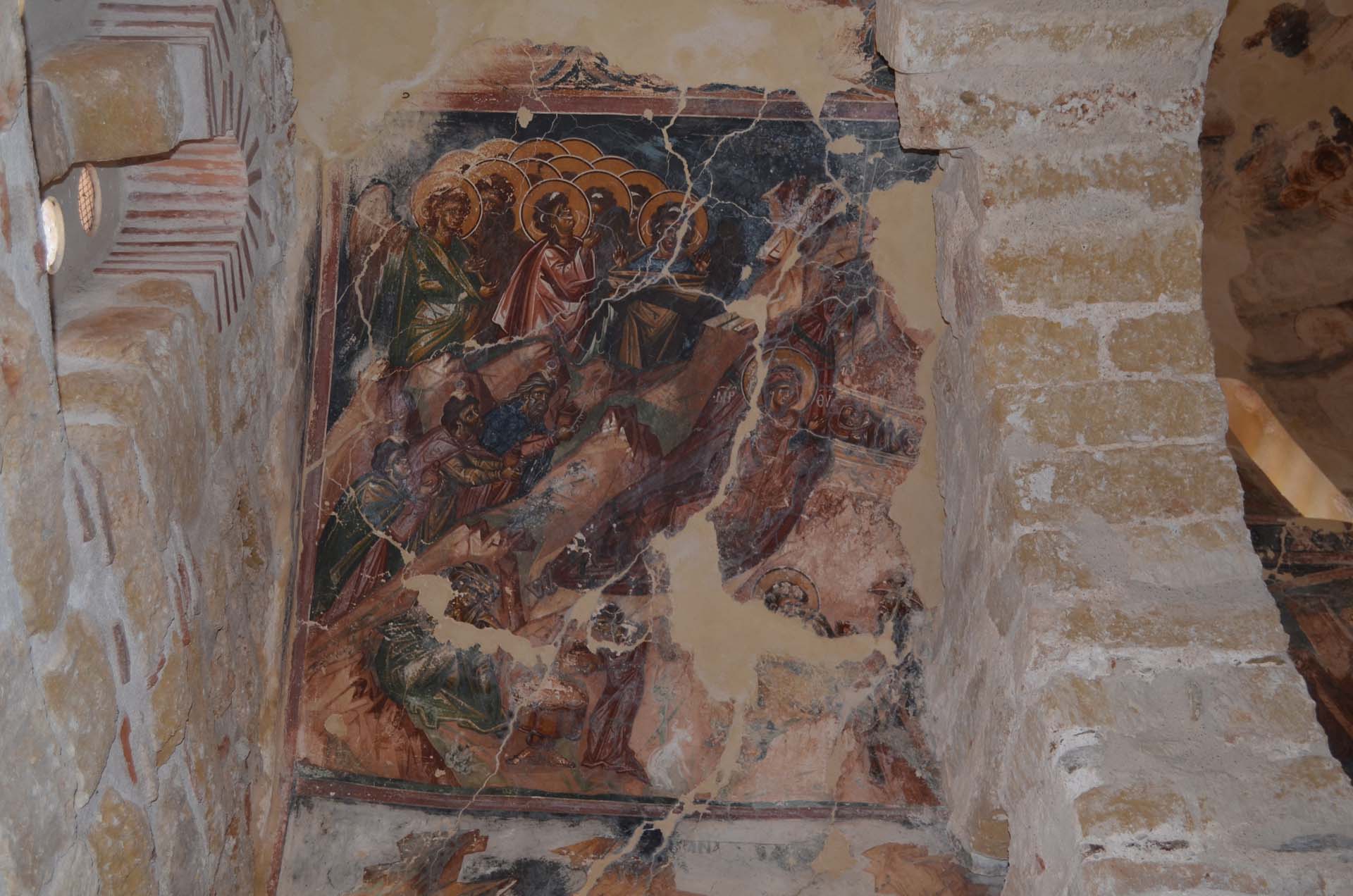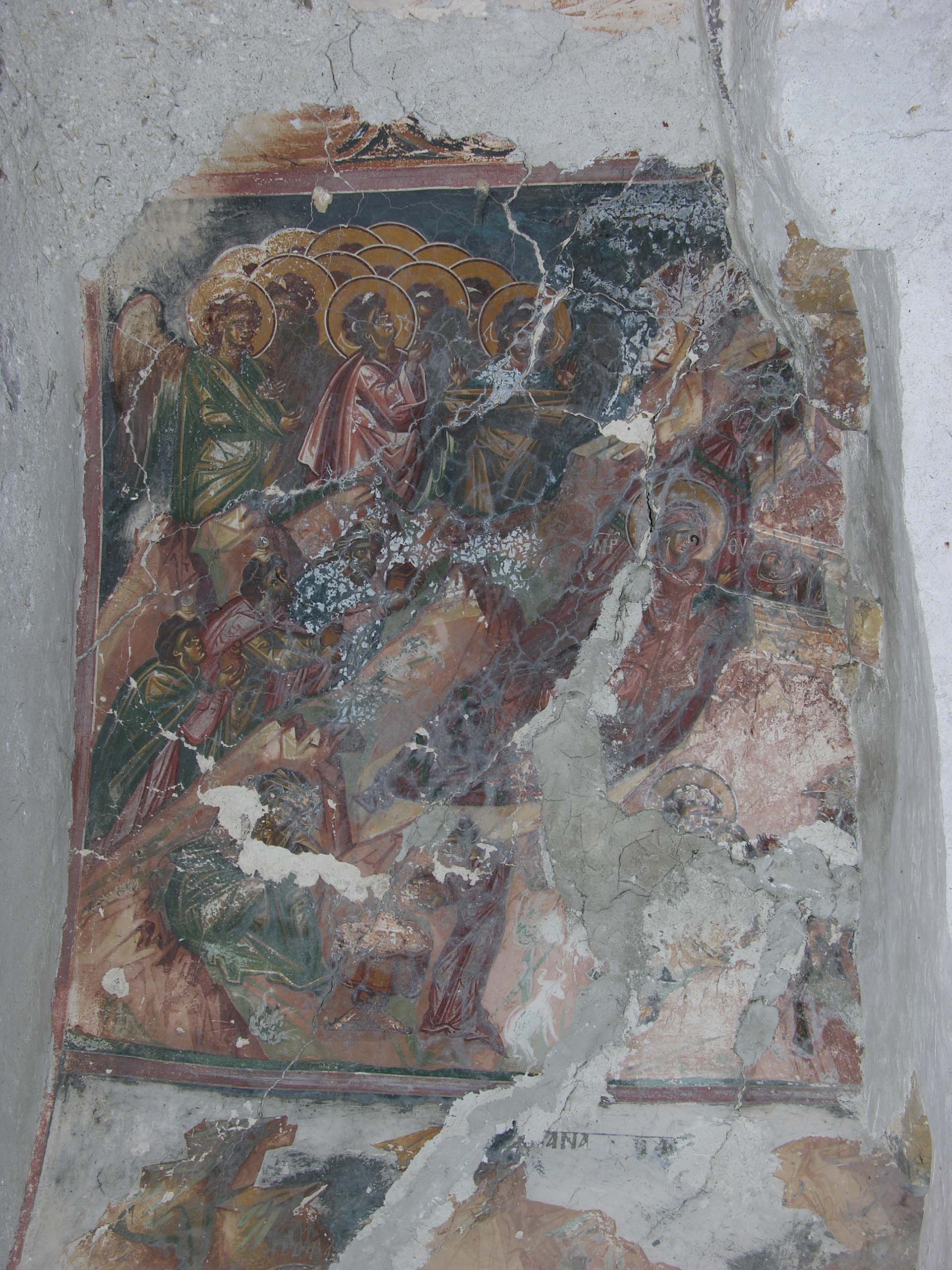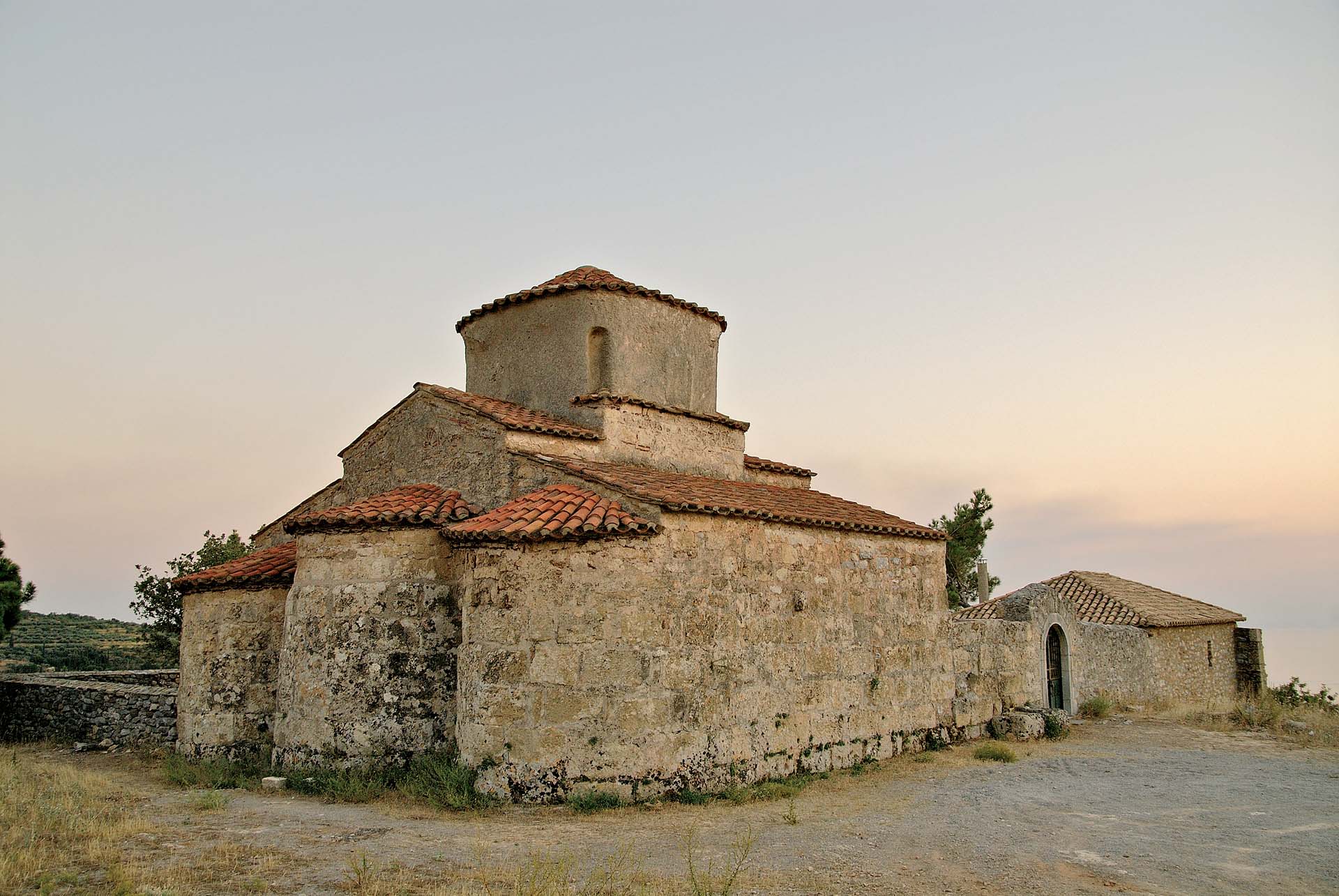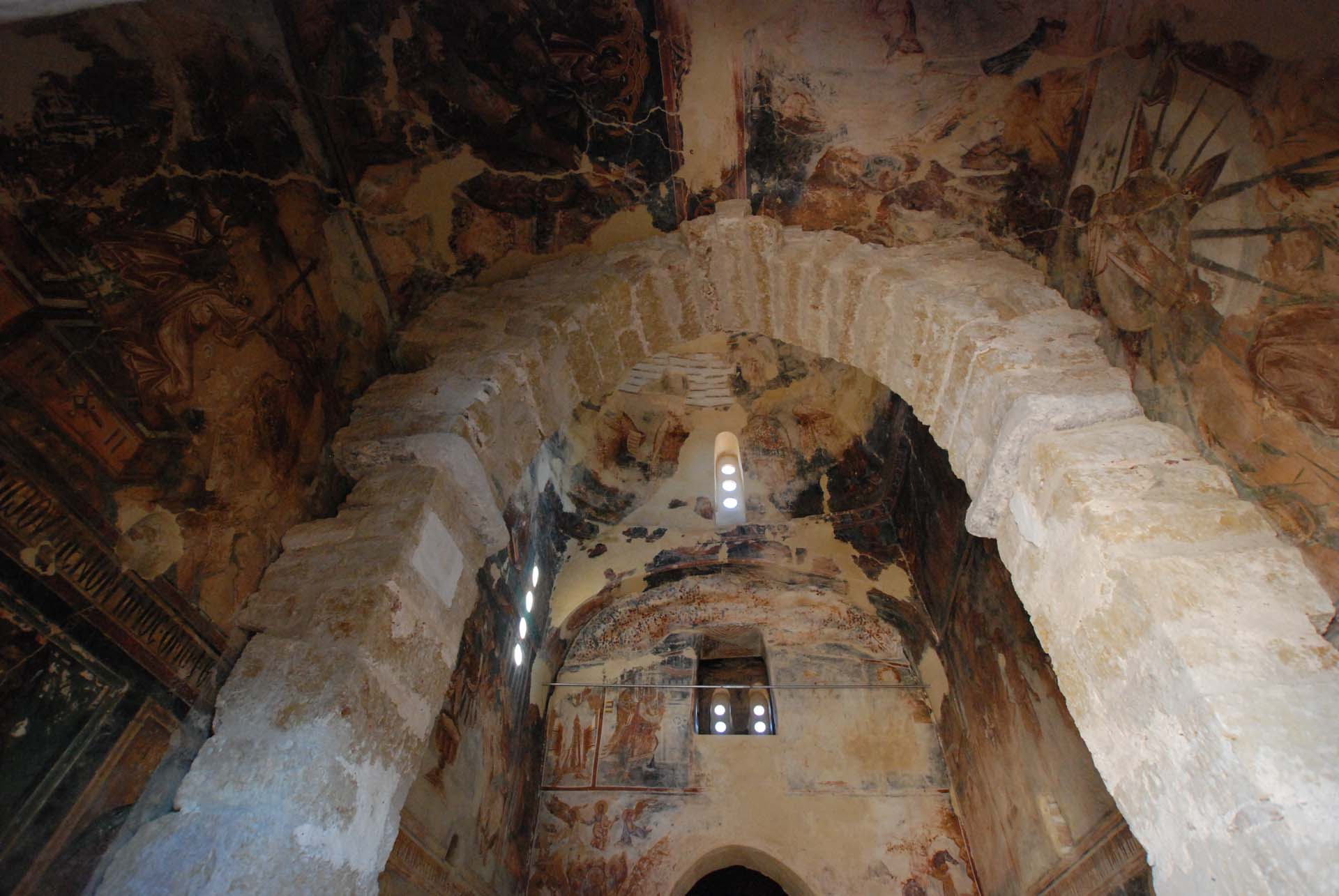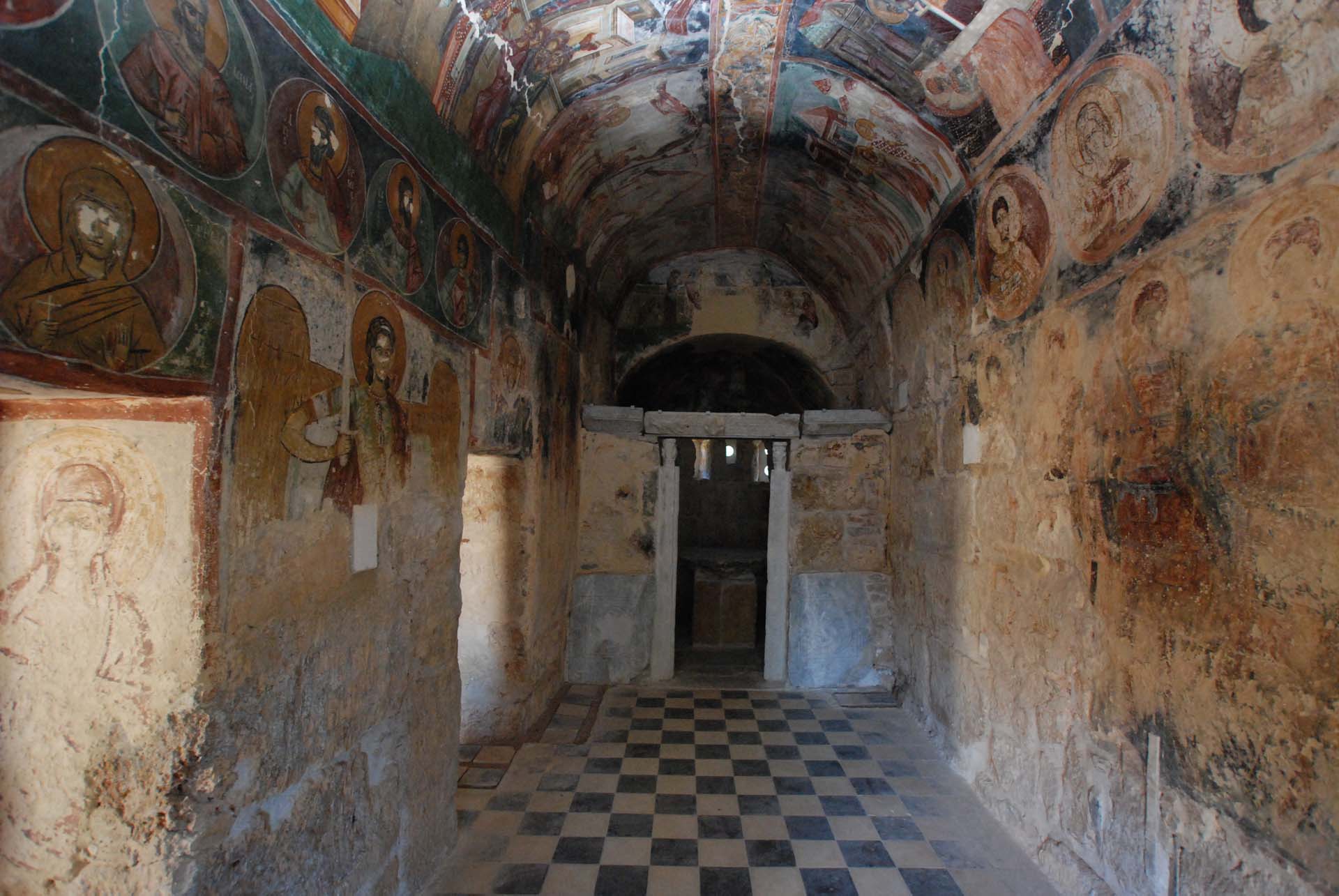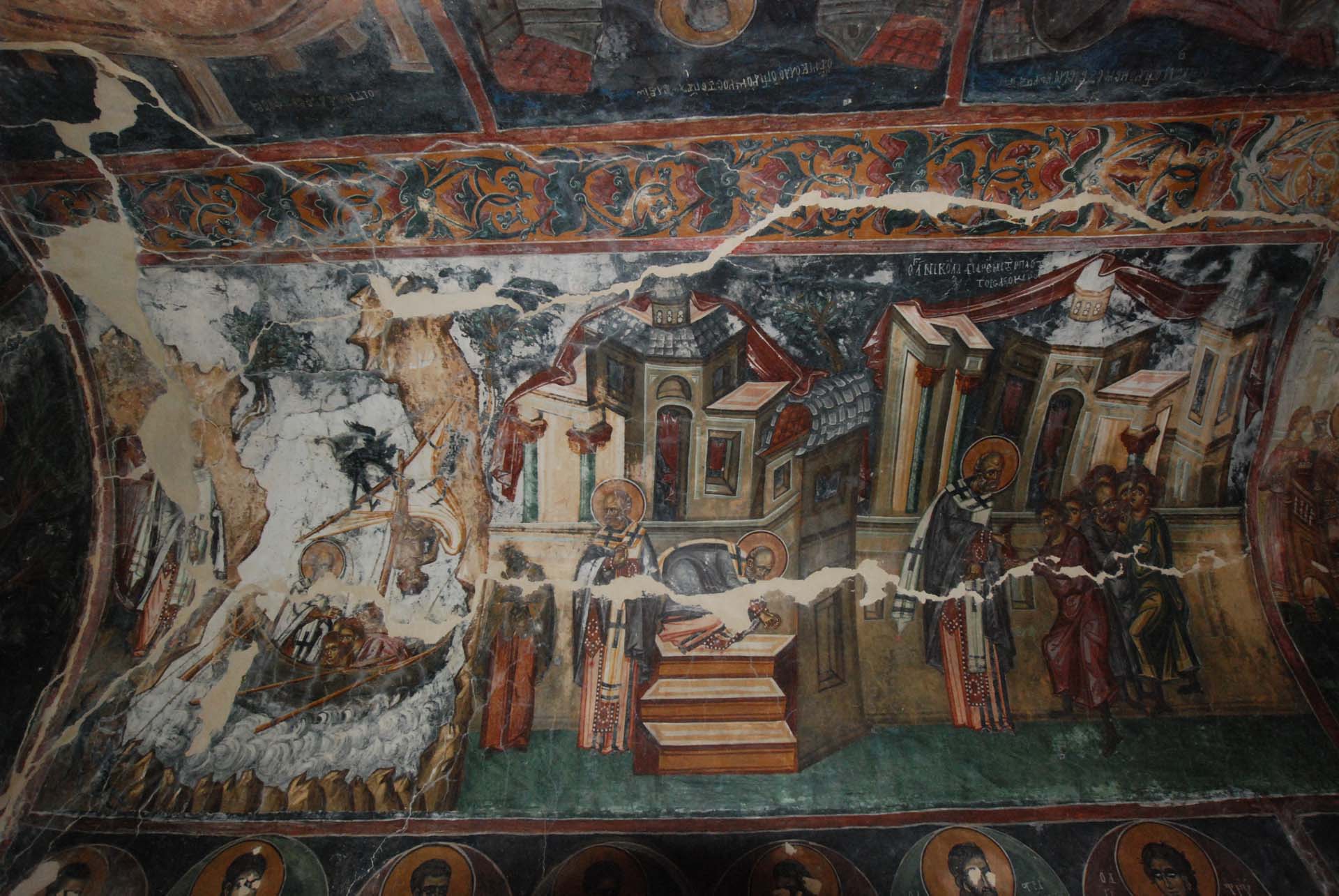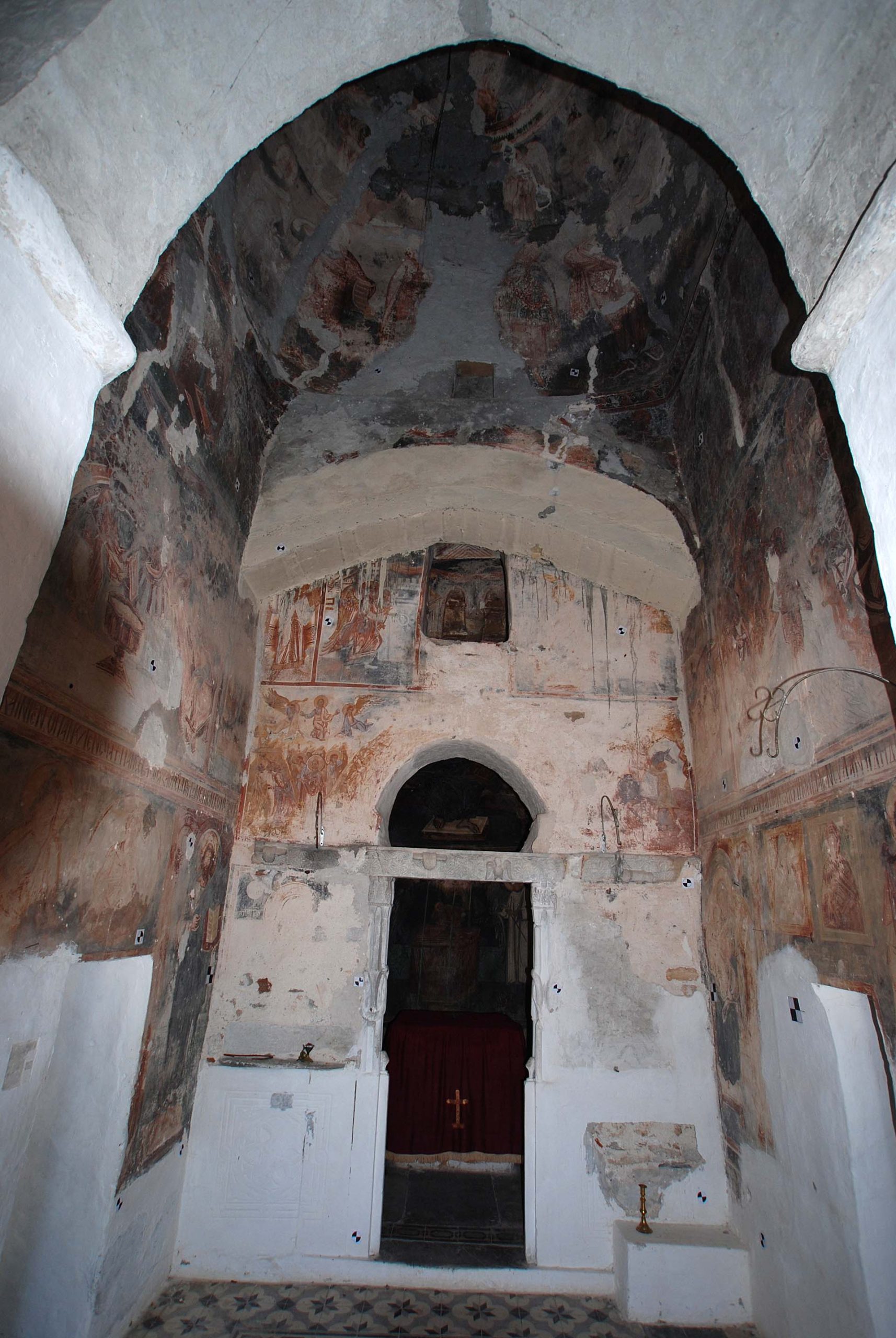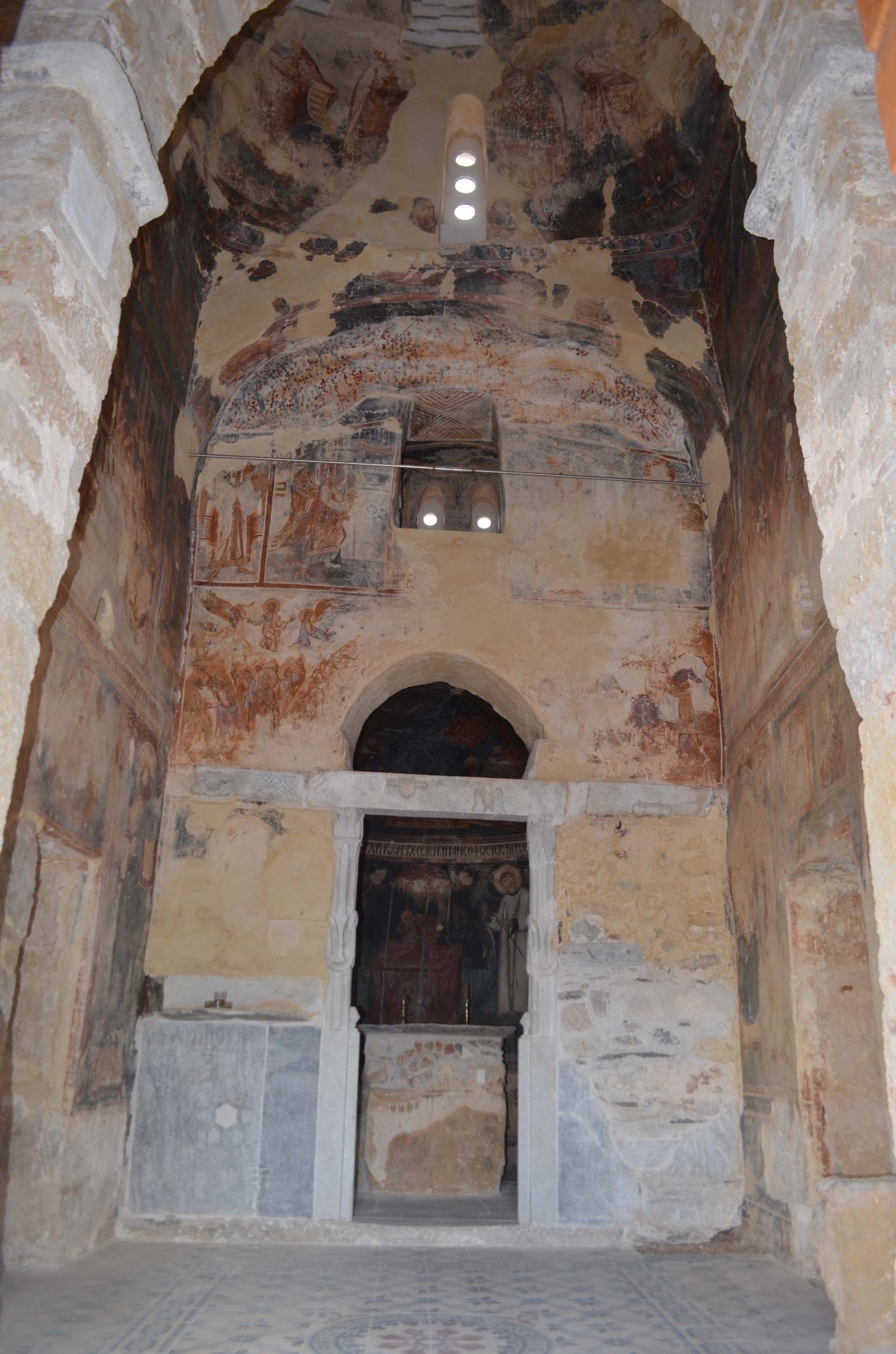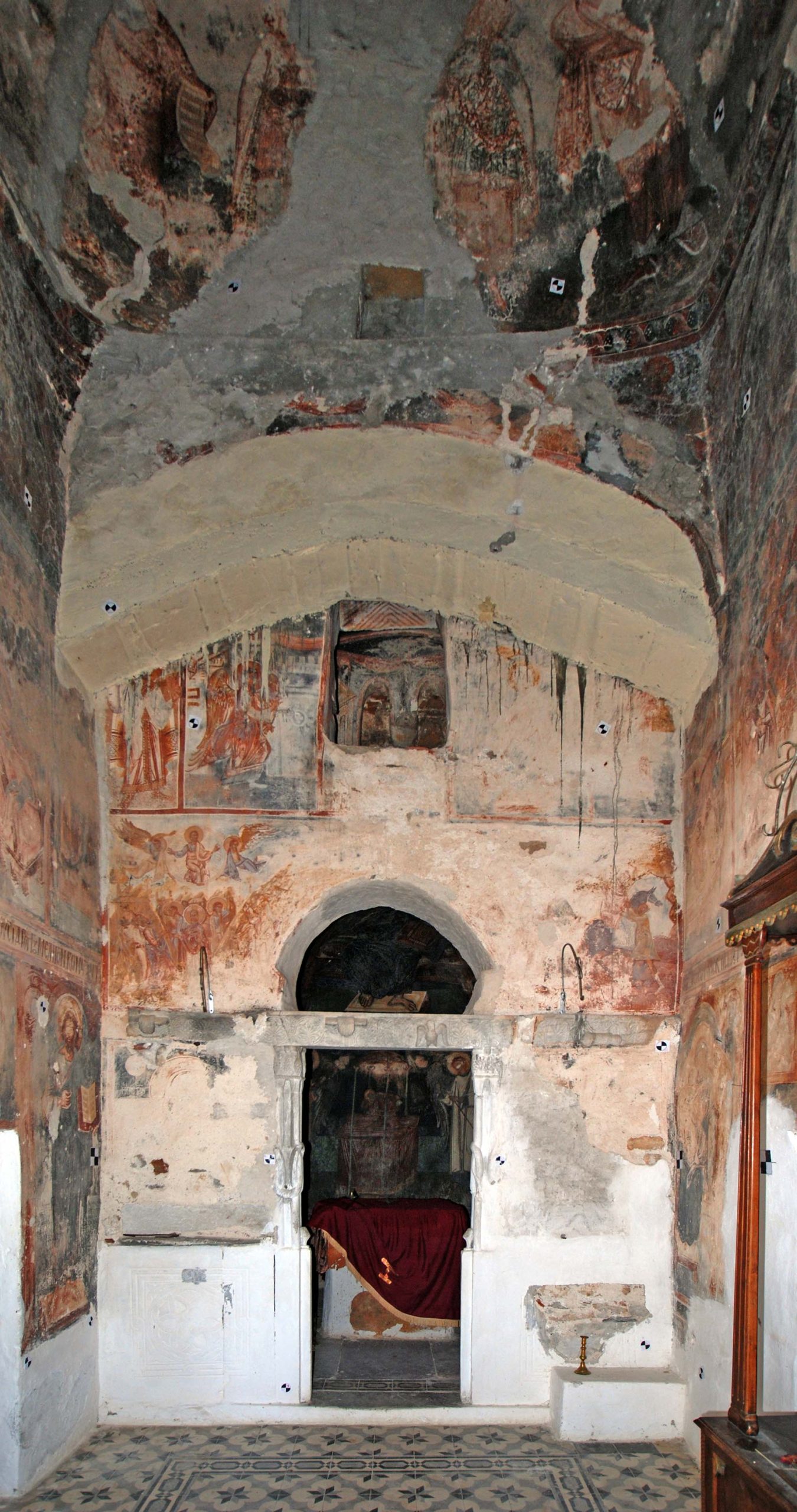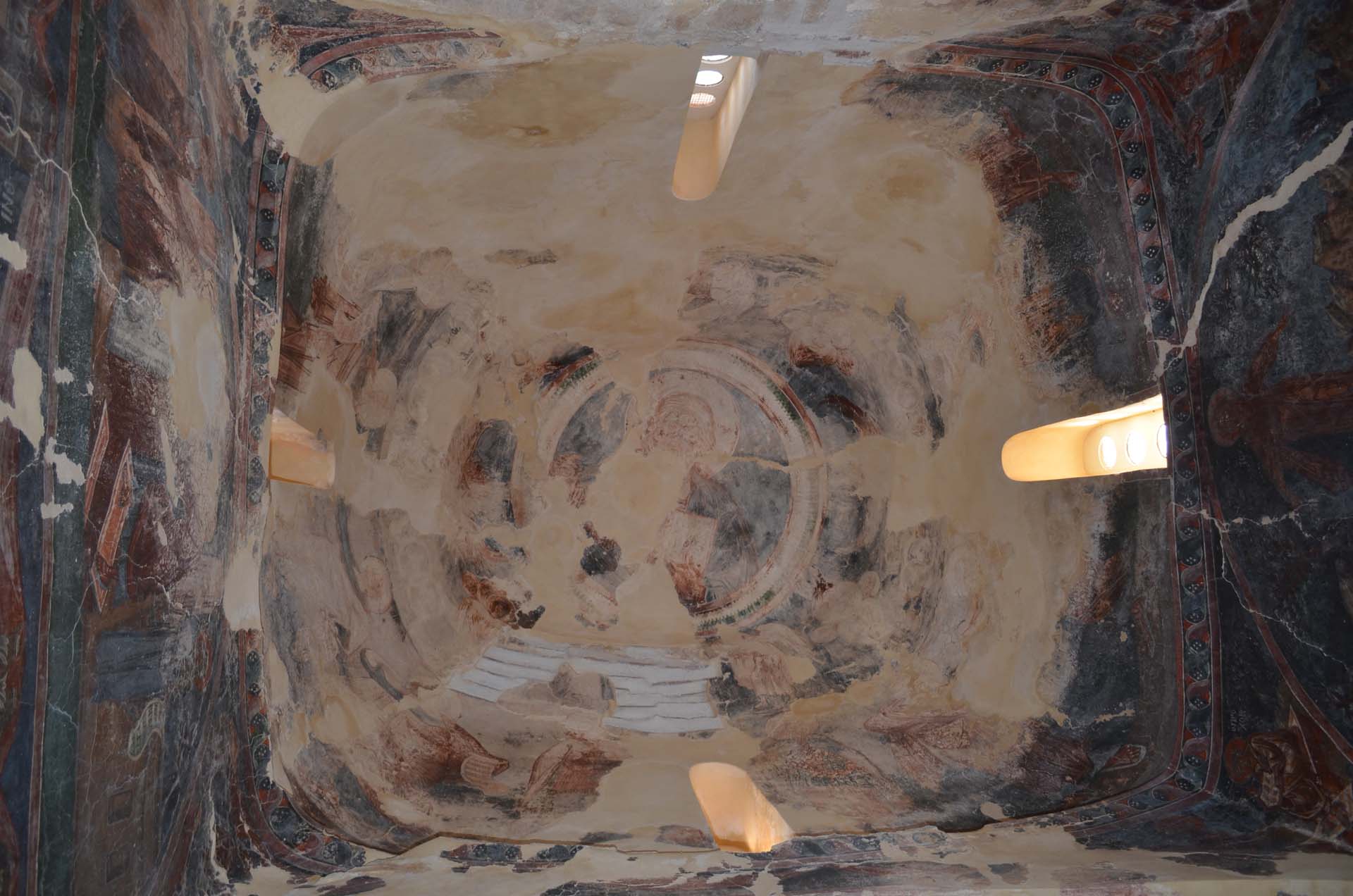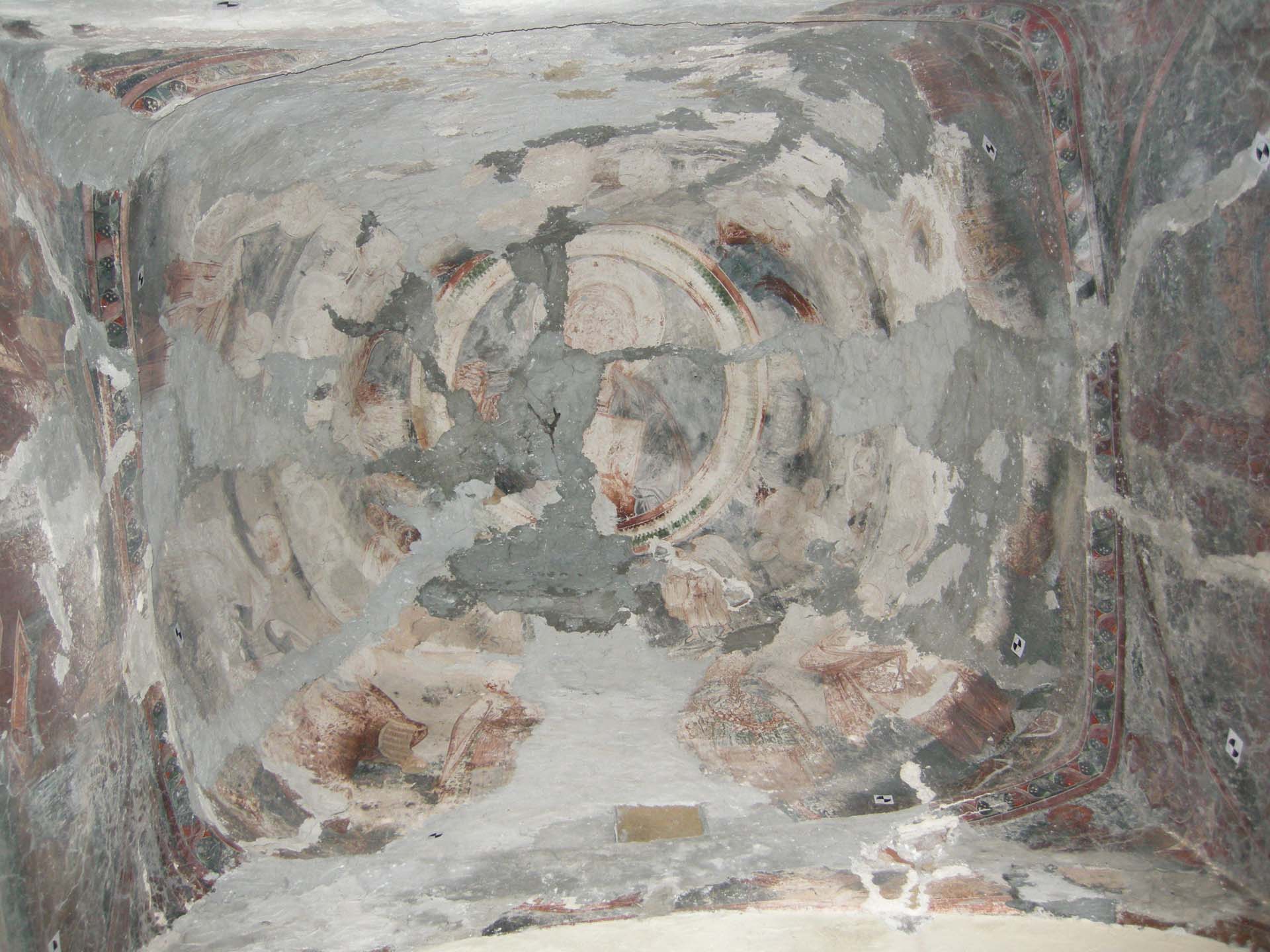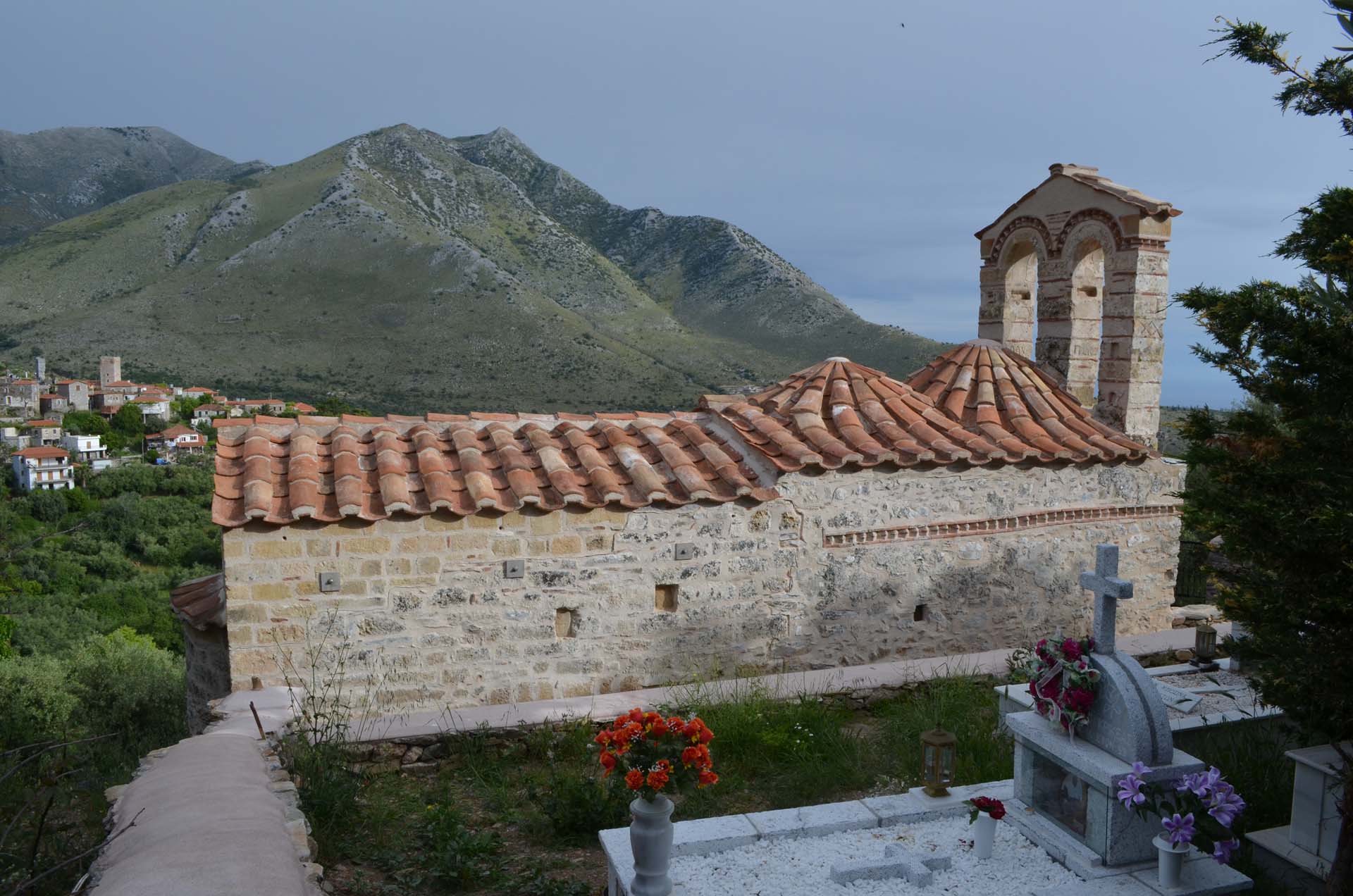

The single-naved funerary church of Hagia Sophia is erected on the western fringes of the Lagada village. The monument must have been constructed in at least two different phases. The restoration project showed that the east barrel-vaulted part including the semi-circular apse was first built by sandstones and lime mortar. A templon screen was built later to divide the sanctuary from the nave. A blind arch is applied to the surface of the north wall of the bema to cover the liturgical requirements of the prothesis. The semi cylinder of the apse is occupied by a quite late built-altar.
In the late 13th the church was expanded westwards. This addition is covered by two pendentive domes that rest on a particular system of free arches, which are adhered to the side walls. These were juxtaposed along the longitudinal axis of the church which is a rare characteristic in Byzantine church architecture. Rubble stones and pieces of bricks were used in the masonry of the later western part of the church. Dentil courses and simple decorative brick ornaments that surmount the door openings compose the decorative brickwork of the walls. Furthermore, in the late 13th century, the double-lobed belfry was erected; it is one of the most impressive examples of such structures in the wider area of Mani. Its walls were constructed according to the cloisonné masonry and were beautified with a variety of decorative brickwork. A big part of the upper end had been destroyed.
Wall-paintings are preserved at the western part of the church. The restoration project revealed fragments of two layers of wall-paintings at the semi-cylinder of the apse. The main phase of the church’s decoration dates to the first half of the 14th century. The east pendentive dome is decorated with the Pentecost, while the west is decorated with the Entry to Jerusalem, the Crucifixion and the Resurrection (Anastasis). The iconographic programme of the nave includes two more scenes from the life of Christ: the Resurrection of Lazarus and the Baptism of Christ. A number of saints are depicted on the side walls and one may discern saints Kosmas and Damian on the drum of the north-west arch. The wall-paintings are characterised by an “archaic and conservative” style; however, they have assimilated innovative 14th century iconographic elements, such as the collapse of Virgin Mary in the representation of the Crucifixion.
The entire monument suffered serious static problems, both in the eastern part, where a great part of the barrel vault had collapsed, and in the western part at the two pendentive domes and the belfry, while the wall-paintings were heavily damaged.
The project included:
- Fieldwork and excavation. Documentation.
- Drainage all around the monument.
- Installation of three metal buttresses to reinforce the stability of the monument.
- Reconstruction of the collapsed eastern barrel-vault.
- Deep joint-filling and grouting with mortar of the same composition with the initial
- Consolidation of the two pendentive domes and retiling of roofs with floating Byzantine tiles
- Installation of stone slab flooring at the western part of the monument.
- Restoration of the original altar with its marble pillar support
- Restoration of the belfry and the blind arch of the south door.
- Consolidation and maintenance of the wall paintings.
- Installation of new wooden door frames (according the Byzantine system) and of a wooden templon
- Landscaping to facilitate the visitors’ access and to highlight the monument.
- Repairing of the metal gate of the cemetery.
- Construction of a stone water tank and of a stone fountain at the north-western part of the cemetery.
- Installation of a sign with explanation text; installation of a sign with explanation text in Braille scripture.
- Edition of a leaflet.
The restoration and rehabilitation of the Hagia Sophia church in Lagada enriched the so far knowledge concerning the history of the monument. The church and its surroundings were dealt as a single unit and are now ready to regain their religious functions. At the same time, this important monument of Mani is now ready to attract more tourists to the picturesque Lagada village.

